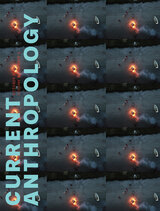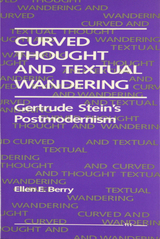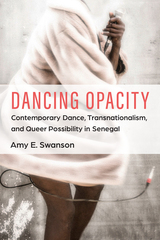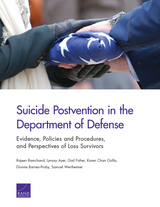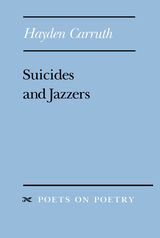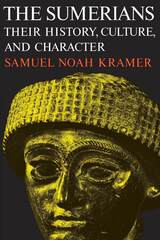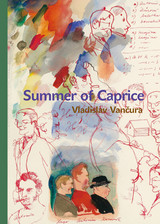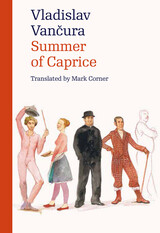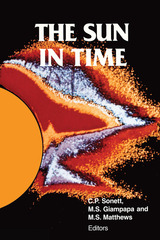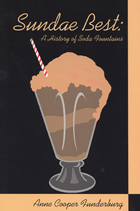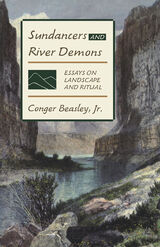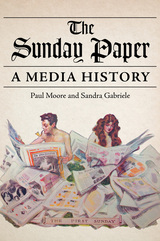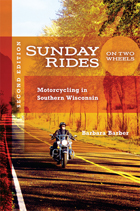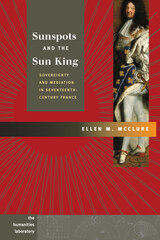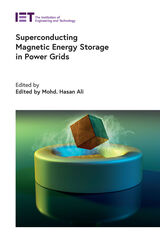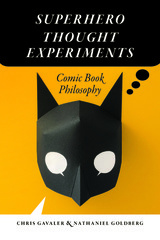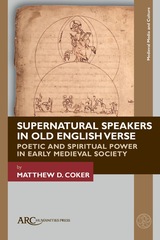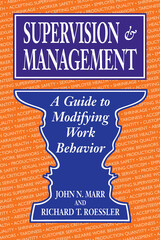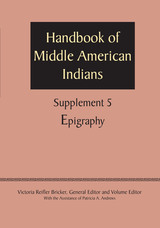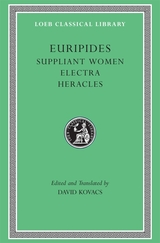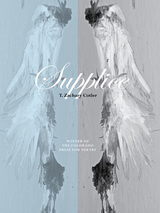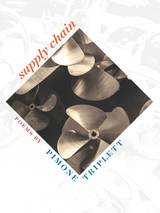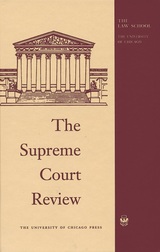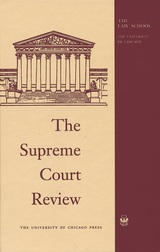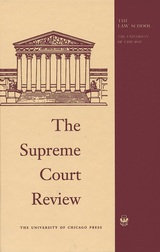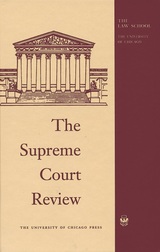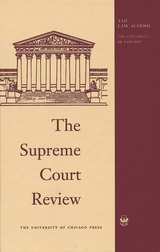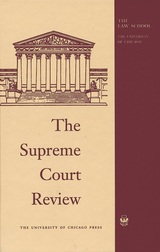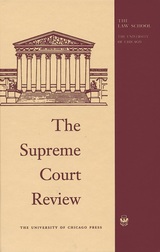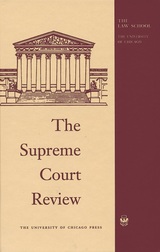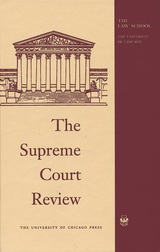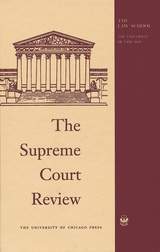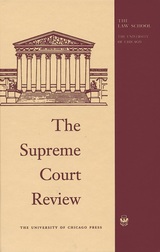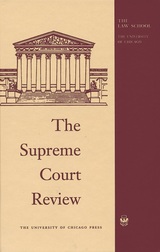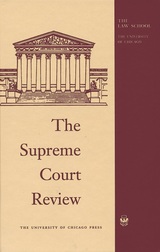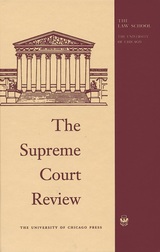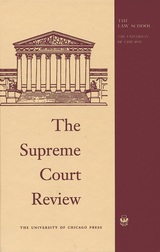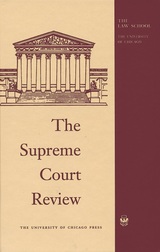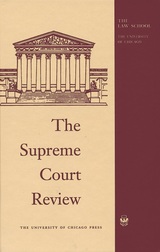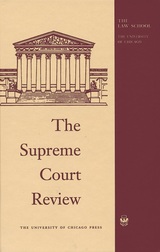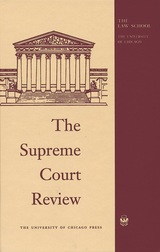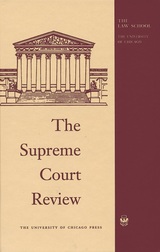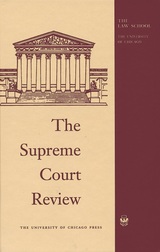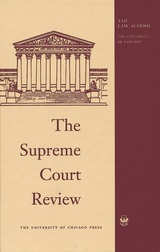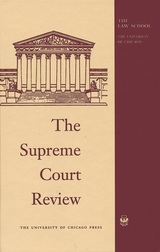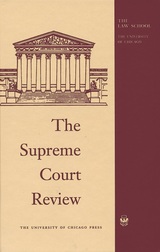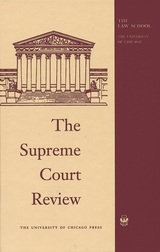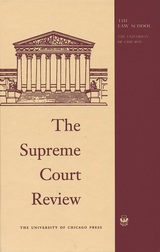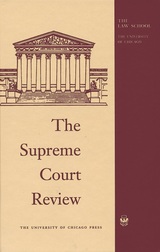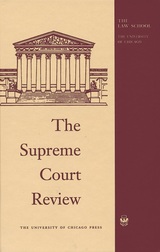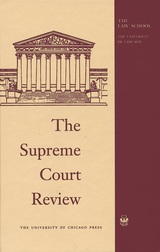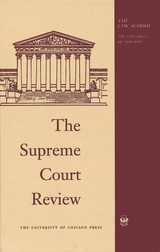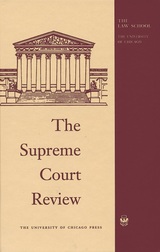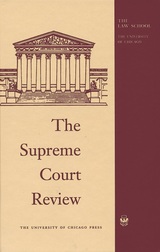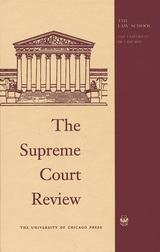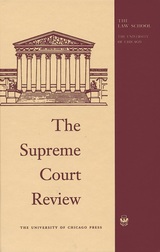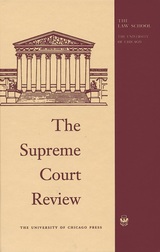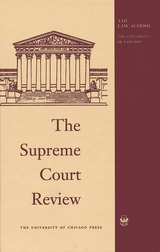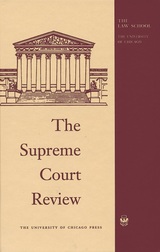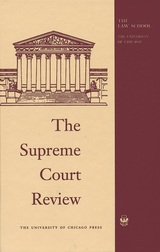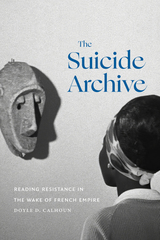 The Suicide Archive: Reading Resistance in the Wake of French Empire
Doyle D. Calhoun
Duke University Press, 2024 Throughout the French empire, from the Atlantic and the Caribbean to West and North Africa, men, women, and children responded to enslavement, colonization, and oppression through acts of suicide. In The Suicide Archive, Doyle D. Calhoun charts a long history of suicidal resistance to French colonialism and neocolonialism, from the time of slavery to the Algerian War for Independence to the “Arab Spring.” Noting that suicide was either obscured in or occluded from French colonial archives, Calhoun turns to literature and film to show how aesthetic forms and narrative accounts can keep alive the silenced histories of suicide as a political language. Drawing on scientific texts, police files, and legal proceedings alongside contemporary African and Afro-Caribbean novels, film, and Senegalese oral history, Calhoun outlines how such aesthetic works rewrite histories of resistance and loss. Consequently, Calhoun offers a new way of writing about suicide, slavery, and coloniality in relation to literary history.
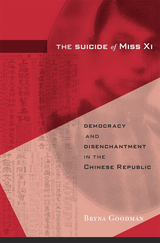 The Suicide of Miss Xi: Democracy and Disenchantment in the Chinese Republic
Bryna Goodman
Harvard University Press, 2021 A suicide scandal in Shanghai reveals the social fault lines of democratic visions in China’s troubled Republic in the early 1920s.
On September 8, 1922, the body of Xi Shangzhen was found hanging in the Shanghai newspaper office where she worked. Although her death occurred outside of Chinese jurisdiction, her US-educated employer, Tang Jiezhi, was kidnapped by Chinese authorities and put on trial. In the unfolding scandal, novelists, filmmakers, suffragists, reformers, and even a founding member of the Chinese Communist Party seized upon the case as emblematic of deep social problems. Xi’s family claimed that Tang had pressured her to be his concubine; his conviction instead for financial fraud only stirred further controversy.
The creation of a republic ten years earlier had inspired a vision of popular sovereignty and citizenship premised upon gender equality and legal reform. After the quick suppression of the first Chinese parliament, commercial circles took up the banner of democracy in their pursuit of wealth. But, Bryna Goodman shows, the suicide of an educated “new woman” exposed the emptiness of republican democracy after a flash of speculative finance gripped the city. In the shadow of economic crisis, Tang’s trial also exposed the frailty of legal mechanisms in a political landscape fragmented by warlords and enclaves of foreign colonial rule.
The Suicide of Miss Xi opens a window onto how urban Chinese in the early twentieth century navigated China’s early passage through democratic populism, in an ill-fated moment of possibility between empire and party dictatorship. Xi Shangzhen became a symbol of the failures of the Chinese Republic as well as the broken promises of citizen’s rights, gender equality, and financial prosperity betokened by liberal democracy and capitalism.
Suicide or Murder?: The Strange Death of Governor Meriwether Lewis
Vardis Fisher
Ohio University Press, 1962 The death of Meriwether Lewis is one of the great mysteries of American history. Was he murdered at Grinder’s Stand or did he commit suicide? Vardis Fisher meticulously reconstructs the events and presents his own version of the case with the precision and persuasiveness of a fine trial lawyer. But Fisher was also a great novelist and it is his sense of character that serves him best here. We know Lewis’ complex sensibility as well as we know that of any man of his time—his journals are so self-revealing, so exacting in the record they make of his musings, doubts, and elations. Fisher offers us this complex Lewis and, with equal perceptiveness, sets the rough, frontier scene at Grinder’s Stand. The result is a fine mystery, well solved, that leans toward tragedy.
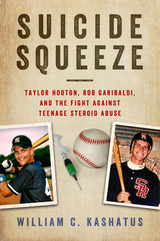 Suicide Squeeze: Taylor Hooton, Rob Garibaldi, and the Fight against Teenage Steroid Abuse
William C. Kashatus
Temple University Press, 2016 Appearance- and performance-enhancing drugs—specifically, anabolic steroids (APEDs)—provide a tempting competitive advantage for amateur baseball players. But this shortcut can exact a fatal cost on talented athletes. In his urgent book Suicide Squeeze, William Kashatus chronicles the experiences of Taylor Hooton and Rob Garibaldi, two promising high school baseball players who abused APEDs in the hopes of attracting professional scouts and Division I recruiters. However, as a result of their steroid abuse, they ended up taking their own lives. In Suicide Squeeze—named for the high-risk play in baseball to steal home—Kashatus identifies the symptoms and dangers of steroid use among teens. Using archival research and interviews with the Hooton and Garibaldi families, he explores the lives and deaths of these two troubled young men, the impact of their suicides on MLB, and the ongoing fight against adolescent APED use by their parents. A passionate appeal to prevent additional senseless deaths by athletes, Suicide Squeeze is an important contribution to debates on youth and sports and on public policy.
Suicides and Jazzers
Hayden Carruth
University of Michigan Press, 1993 In Suicides and Jazzers, Hayden Carruth reveals as never before the hard experiences that have shaped his life and art. In the lead essay, entitled "Suicide," he speaks of the psychiatric illness he has lived with for most of his life and his attempted suicide in 1988. In "Fragments of Autobiography," he shares memories of a Connecticut childhood, early ruminations about death, and his coming-of-age in small-town America. A major essay on the poetry of Paul Goodman is followed by shorter essays on Wallace Stevens, Emily Dickinson, Donald Hall, and Carolyn Kizer. In sections entitled "Elegies," "Reviews," and "Musical" Carruth celebrates fine writers and musicians who he feels have been intentionally neglected by the establishment, including authors Grace Paley and David Ignatow, tenor saxophonist Ben Webster, and, in "The Spun-Off Independent Dead-End Ten-Star Blast," white jazz musicians.
 Suing for Medical Malpractice
Frank A. Sloan, Penny B. Githens, Ellen Wright Clayton, Gerald B. Hickson, Dougl
University of Chicago Press, 1993 Medical malpractice suits today can result in multi-million-dollar settlements, and a practicing physician can pay $100,000 or more annually for malpractice insurance. Some complain that lawyers and plaintiffs are overcompensated by exorbitant judgments that add to the rising cost of health care. But there has been very little evidence to show whether these arguments are true. In this timely work, six experts in health policy, law, and medicine study nearly 200 malpractice claims to show that, contrary to popular perceptions, victims of malpractice are not overcompensated and our legal system for dealing with malpractice claims is not defective.
The authors survey claims filed in Florida between 1986 and 1989 by people who suffered permanent injury or death during birth or during treatment in an emergency room. How often did illegitimate claims result in financial awards? What was the relation between the injury and the amount the patient lost economically? How much did the plaintiffs actually recover? How did the claimants choose their lawyers and what kind of relationship did they have?
Contrary to common perceptions, in the majority of cases the claims were merited, and the authors found that claimants were on average substantially undercompensated—only about one-fifth of plaintiffs recovered more than their economic loss caused by injury or death. The evidence in this book suggests that placing dollar limits on malpractice cases is unjustified and that our tort system is not so faulty after all.
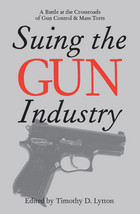 Suing the Gun Industry: A Battle at the Crossroads of Gun Control and Mass Torts
Timothy D. Lytton
University of Michigan Press, 2005 "Mass tort litigation against the gun industry, with its practical weaknesses, successes, and goals, provides the framework for this collection of thoughtful essays by leading social scientists, lawyers, and academics. . . . These informed analyses reveal the complexities that make the debate so difficult to resolve. . . . Suing the Gun Industry masterfully reveals the many details contributing to the intractability of the gun debate."
-New York Law Journal
"Second Amendment advocate or gun-control fanatic, all Americans who care about freedom need to read Suing the Gun Industry."
-Bob Barr, Member of Congress, 1995-2003, and Twenty-First Century Liberties Chair for Freedom and Privacy, American Conservative Union
"The source for anyone interested in a balanced analysis of the lawsuits against the gun industry."
-David Hemenway, Professor of Health Policy & Director, Harvard Injury Control Research Center Harvard School of Public Health Health Policy and Management Department, author of Private Guns, Public Health
"Highly readable, comprehensive, well-balanced. It contains everything you need to know, and on all sides, about the wave of lawsuits against U.S. gun manufacturers."
-James B. Jacobs, Warren E. Burger Professor of Law and author of Can Gun Control Work?
"In Suing the Gun Industry, Timothy Lytton has assembled some of the leading scholars and advocates, both pro and con, to analyze this fascinating effort to circumvent the well-known political obstacles to more effective gun control. This fine book offers a briefing on both the substance and the legal process of this wave of lawsuits, together with a better understanding of the future prospects for this type of litigation vis-à-vis other industries."
-Philip J. Cook, Duke University
"An interesting collection, generally representing the center of the gun-control debate, with considerable variation in focus, objectivity, and political realism."
-Paul Blackman, retired pro-gun criminologist and advocate
Gun litigation deserves a closer look amid the lessons learned from decades of legal action against the makers of asbestos, Agent Orange, silicone breast implants, and tobacco products, among others.
Suing the Gun Industry collects the diverse and often conflicting opinions of an outstanding cast of specialists in law, public health, public policy, and criminology and distills them into a complete picture of the intricacies of gun litigation and its repercussions for gun control.
Using multiple perspectives, Suing the Gun Industry scrutinizes legal action against the gun industry. Such a broad approach highlights the role of this litigation within two larger controversies: one over government efforts to reduce gun violence, and the other over the use of mass torts to regulate unpopular industries.
Readers will find Suing the Gun Industry a timely and accessible picture of these complex and controversial issues.
Contributors:
Tom Baker
Donald Braman
Brannon P. Denning
Tom Diaz
Howard M. Erichson
Thomas O. Farrish
Shannon Frattaroli
John Gastil
Dan M. Kahan
Don B. Kates
Timothy D. Lytton
Julie Samia Mair
Richard A. Nagareda
Peter H. Schuck
Stephen D. Sugarman
Stephen Teret
Wendy Wagner
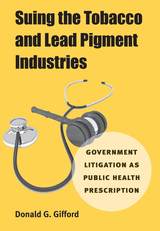 Suing the Tobacco and Lead Pigment Industries: Government Litigation as Public Health Prescription
Donald G. Gifford
University of Michigan Press, 2010 "The topic, how tort law evolved over time into a system that allowed, for a moment at least, a parens patriae form of massive litigation against corporations, is exceedingly interesting and important. Gifford's treatment of this topic is highly informative, engaging, insightful, very current, and wise."
---David Owen, Carolina Distinguished Professor of Law, and Director of Tort Law Studies, University of South Carolina In Suing the Tobacco and Lead Pigment Industries, legal scholar Donald G. Gifford recounts the transformation of tort litigation in response to the challenge posed by victims of 21st-century public health crises who seek compensation from the product manufacturers. Class action litigation promised a strategy for documenting collective harm, but an increasingly conservative judicial and political climate limited this strategy. Then, in 1995, Mississippi attorney general Mike Moore initiated a parens patriae action on behalf of the state against cigarette manufacturers. Forty-five other states soon filed public product liability actions, seeking both compensation for the funds spent on public health crises and the regulation of harmful products. Gifford finds that courts, through their refusal to expand traditional tort claims, have resisted litigation as a solution to product-caused public health problems. Even if the government were to prevail, the remedy in such litigation is unlikely to be effective. Gifford warns, furthermore, that by shifting the powers to regulate products and to remediate public health problems from the legislature to the state attorney general, parens patriae litigation raises concerns about the appropriate allocation of powers among the branches of government. Donald G. Gifford is the Edward M. Robertson Research Professor of Law at the University of Maryland School of Law.
 A Suitable Enemy: Racism, Migration and Islamophobia in Europe
Liz Fekete
Pluto Press, 2009 Liz Fekete is a leading authority on issues of racism, Islamophobia and national security legislation. A Suitable Enemy draws on sixteen years of research to present a comprehensive overview of EU immigration, asylum, race and security policies.
Fekete argues that at the same time as the EU introduces selective migration policies, it closes its borders against asylum seekers who were the first victims of the growth of the security state which now embraces Muslims. She explores the way in which anti-terrorist legislation has been used to evict undesirable migrants, how deportation policies commodify and de-humanise the most vulnerable and how these go hand in hand with evolving forms of racism, particularly Islamophobia.
At the heart of the book is an examination of xeno-racism -- a non-colour coded form of institutionalised racism -- where migrants who do not assimilate, or who are believed to be incapable of assimilation, are excluded.
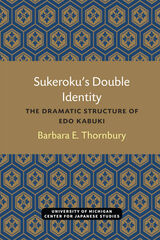 Sukeroku’s Double Identity: The Dramatic Structure of Edo Kabuki
Barbara E. Thornbury
University of Michigan Press, 1982 The aim of this book is to show that seemingly illogical double identity of the townsman, Sukeroku, and the samurai, Soga Goro, in the play Sukeroku is a surviving element of what was once a complex and coherent structure based on a traditional performance calendar. To show how the calendar function and what Sukeroku's double identity signifies, the book is divided into two parts. Part One studies the structure of Edo kabuki. The first chapter, which outlines that structure, is based for the most part on writings of the Tokugawa period. The second chapter then looks at the concepts of sekai, "tradition," and shuko, "innovation." Kabuki was the product of material that had become a familiar part of Japanese culture by repeated use and dramatization over long periods of time, starting before kabuki began, and material that was relatively new and was used to transform the older, set material. The double identity in Sukeroku came about as a result of this interplay between what was received by way of traditional and what was added by way of innovation. Part Two considers the significance of the double identity. The author concludes that Sukeroku's double identity gave Edo audiences a hero who was an idealization of the contemporary Tokugawa townsman and at the same time a transformation of a samurai god-hero of the past. The first chapter of Part Two traces the development of Sukeroku's Soga Goro/samurai identity, from its origins in the early dramatic forms of no, kowaka, and ko-joruri, to the representation of Soga Goro in kabuki by Ichikawa Danjuro I. The seconds then looks at the transformation of Soga Gorointo Sukeroku by discussing the origins of Sukeroku and its introductions to Edo kabuki by Ichikawa Danjuro I and his son, Danjuro II, since their work was the basis of all later developments.
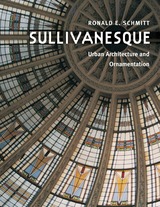 Sullivanesque: Urban Architecture and Ornamentation
Ronald E. Schmitt
University of Illinois Press, 2001 Sullivanesque offers a visual and historical tour of a unique but often overlooked facet of modern American architecture derived from Louis Sullivan.Highly regarded in architecture for inspiring the Chicago School and the Prairie School, Sullivan was an unwilling instigator of the method of facade composition--later influenced by Frank Lloyd Wright, William Gray Purcell, and George G. Elmslie--that came to be known as Sullivanesque. Decorative enhancements with botanical and animal themes, Sullivan's distinctive ornamentation mitigated the hard geometries of the large buildings he designed, coinciding with his "form follows function" aesthetic.Sullivan's designs offered solutions to problems presented by new types and scales of buildings. Widely popular, they were also widely copied, and the style proliferated due to a number of Chicago-based interests, including the Radford Architectural Company and several decorative plaster and terra-cotta companies. Stock replicas of Sullivan's designs manufactured by the Midland Terra Cotta Company and others gave distinction and focus to utilitarian buildings in Chicago's commercial strips and other confined areas, such as the downtown districts of smaller towns. Mass-produced Sullivanesque terra cotta endured as a result of its combined economic and aesthetic appeal, blending the sophistication of high architectural art with the pragmatic functionality of building design.Masterfully framed by the author's photographs of Sullivanesque buildings in Chicago and throughout the Midwest, Ronald E. Schmitt's in-depth exploration of the Sullivanesque tells the story of its evolution from Sullivan's intellectual and aesthetic foundations to its place as a form of commercial vernacular. The book also includes an inventory of Sullivanesque buildings.Honorable Mention recipient of the 2002 PSP Awards for Excellence in Professional/Scholarly Publishing
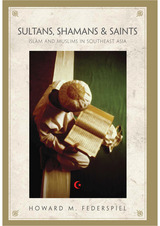 Sultans, Shamans, and Saints: Islam and Muslims in Southeast Asia
Howard M. Federspiel
University of Hawaii Press, 2007 By the fourteenth century the Islamic faith had spread via maritime trade routes to Southeast Asia where, over the next seven hundred years, it would have a continuing influence on political life, social customs, and the development of the arts. Sultans, Shamans, and Saints looks at Islam in Southeast Asia during four major eras: its arrival (to 1300), the first flowering of Islamic identity (1300–1800), the era of imperialism (1800–1945), and the era of independent nation-states (1945–2000). Ranging across the humanities and social sciences, this balanced and accessible work emphasizes the historical development of Southeast Asia’s accommodation of Islam and the creation of its distinctive regional character. Each chapter opens with a general background summary that places events in the greater Asian/Southeast Asian context, followed by an overview of prominent ethnic groups, political events, customs and cultures, religious factors, and art forms.
Sultans, Shamans, and Saints will be of great value to students and researchers specializing in the study of Islam and the comparative study of Muslim societies and culture. It will also be useful to those with a world-systems approach to the study of history and globalization.
 The Sulu Zone: The Dynamics of External Trade, Slavery and Ethnicity in the Transformation of a Southeast Asian Maritime State, 1768-1898 (Second Edition)
James F. Warren
National University of Singapore Press, 2007 First published in 1981, The Sulu Zone deals with a fascinating geographical, cultural and historical "border zone" centered on the Sulu and Celebes Seas between 1768 an 1898, and its complex interactions with China and the West. The author examines the social and cultural forces generated within the Sulu Sultanate by the China trade, namely the advent of organized, long distance maritime slave raiding and the assimilation of captives on a hitherto unprecedented scale into a traditional Malayo-Muslim social system.
His work analyzes the dynamics of the last autonomous Malayo-Muslim maritime state over a long historical period and describes its stunning response to the world capitalist economy and the rapid "forward movement" of colonialism and modernity. It also shows how the changing world of global cultural flows and economic interactions caused by cross-cultural trade and European dominance affected men and women who were forest dwellers, highlanders, and slaves, people who worked in everyday jobs as fishers, raiders, divers and traders. Often neglected by historians, the responses of these members of society are a crucial part of the history of Southeast Asia.
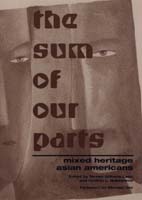 The Sum Of Our Parts: Mixed-Heritage Asian Americans
Teresa Williams-Leon
Temple University Press, 2001 Largely as a result of multiracial activism, the U.S. Census for 2000 offers people the unprecedented opportunity to officially identify themselves with more than one racial group. Among Asian-heritage people in this country and elsewhere, racial and ethnic mixing has a long but unacknowledged history. According to the last U.S. Census, nearly one-third of all interracial marriages included an Asian-descent spouse, and intermarriage rates are accelerating. This unique collection of essays focuses on the construction of identity among people Asian descent who claim multiple heritages.
In the U.S., discussions of race generally center on matters of black and white; Asian Americans usually figure in conversations about race as an undifferentiated ethnic group or as exotic Eurasians. The contributors to this book disrupt the standard discussions by considering people of mixed Asian ethnicities. They also pay particular attention to non-white multiracial identities to decenter whiteness and reflect the experience of individuals or communities who are considered a minority within a minority. With an entire section devoted to the Asian diaspora, The Sum of Our Parts suggests that questions of multiracial and multiethnic identity are surfacing around the globe. This timely and provocative collection articulates them for social scientists and students.
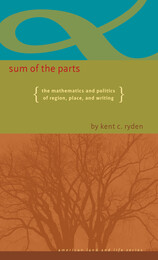 Sum of the Parts: The Mathematics and Politics of Region, Place, and Writing
Kent C Ryden
University of Iowa Press, 2011 Proponents of the new regional history understand that regional identities are constructed and contested, multifarious and not monolithic, that they involve questions of dominance and power, and that their nature is inherently political. In this lively new book, writing in the spirit of these understandings, Kent Ryden engagingly examines works of American regional writing to show us how literary partisans of place create and recreate, attack and defend, argue over and dramatize the meaning and identity of their regions in the pages of their books. Cleverly drawing upon mathematical models that complement his ideas and focusing on both classic and contemporary literary regionalists, Ryden demonstrates that regionalism, in the cultural sense, retains a great deal of power as a framework for literary interpretation. For New England he examines such writers as Robert Frost and Hayden Carruth, Mary E. Wilkins Freeman and Edith Wharton, and Carolyn Chute and Russell Banks to demonstrate that today’s regionalists inspire closer, more democratic readings of life and landscape. For the West and South, he describes Wallace Stegner’s and William Faulkner’s use of region to, respectively, exclude and evade or confront and indict. For the Midwest, he focuses on C. J. Hribal, William Least Heat-Moon, Paul Gruchow, and others to demonstrate that midwesterners continually construct the past anew from the materials at hand, filling the seemingly empty midlands with history and significance. Ryden reveals that there are many Wests, many New Englands, many Souths, and many Midwests, all raising similar issues about the cultural politics of region and place. Writing with appealing freshness and a sense of adventure, he shows us that place, and the stories that emerge from and define place, can be a source of subversive energy that blunts the homogenizing force of region, inscribing marginal places and people back onto the imaginative surface of the landscape when we read it on a place-by-place, landscape-by-landscape, book-by-book basis.
Sumerian Economic Texts from the Third Ur Dynasty
Tom B. Jones, , , and
University of Minnesota Press, 1961 Sumerian Economic Texts from the Third Ur Dynasty was first published in 1961. Minnesota Archive Editions uses digital technology to make long-unavailable books once again accessible, and are published unaltered from the original University of Minnesota Press editions. This is a study and catalogue of some 350 hitherto unpublished Sumerian cuneiform documents, nearly all economic in nature. The authors describe the transliterate each document and present viewpoints regarding certain important classes of the texts. The findings of the study may lead to renewed interest in the third Ur Dynasty, which scholars have long regarded as relatively unimportant because its history is the swan song of Sumerian autonomy and culture.
The Sumerians: Their History, Culture, and Character
Samuel Noah Kramer
University of Chicago Press, 1963 A classic, groundbreaking account of the earliest known human civilization
The Sumerians, the pragmatic and gifted people who preceded the Semites in the land first known as Sumer and later as Babylonia, created what was probably the first high civilization in the history of man, spanning the fifth to the second millenniums B.C. This book is an unparalleled compendium of what is known about them.
In this classic work, Samuel Noah Kramer communicates his enthusiasm for his subject as he outlines the history of the Sumerian civilization and describes their cities, religion, literature, education, scientific achievements, social structure, and psychology. Finally, he considers the legacy of Sumer to the ancient and modern world.
 Summa Contra Gentiles, 1: Book One God
St. Thomas Aquinas
University of Notre Dame Press, 1975 The Summa Contra Gentiles is not merely the only complete summary of Christian doctrine that St. Thomas has written, but also a creative and even revolutionary work of Christian apologetics composed at the precise moment when Christian thought needed to be intellectually creative in order to master and assimilate the intelligence and wisdom of the Greeks and the Arabs. In the Summa Aquinas works to save and purify the thought of the Greeks and the Arabs in the higher light of Christian Revelation, confident that all that had been rational in the ancient philosophers and their followers would become more rational within Christianity.
This exposition and defense of divine truth has two main parts: the consideration of that truth that faith professes and reason investigates, and the consideration of the truth that faith professes and reason is not competent to investigate. The exposition of truths accessible to natural reason occupies Aquinas in the first three books of the Summa. His method is to bring forward demonstrative and probable arguments, some of which are drawn from the philosophers, to convince the skeptic. In the fourth book of the Summa St. Thomas appeals to the authority of the Sacred Scripture for those divine truths that surpass the capacity of reason.
The present volume studies God's existence, nature, and substance, and especially his perfect actuality, the autonomy of his knowledge, the independence of his will, the perfection of his life, and the generosity of his love. Book 2 of the Summa deals with Creation; Book 3, Providence; and Book 4, Salvation.
 Summa Contra Gentiles, 3:I: Book 3: Providence, Part I
St. Thomas Aquinas
University of Notre Dame Press, 1975 The Summa Contra Gentiles is not merely the only complete summary of Christian doctrine that St. Thomas has written; it is also a creative and revolutionary work of Christian apologetics composed at the precise moment when Christian thought needed to be intellectually creative in order to master and assimilate the intelligence and wisdom of the Greeks and the Arabs. In the Summa, Aquinas works to save and purify the thought of the Greeks and the Arabs in the higher light of Christian Revelation, confident that all that had been rational in the ancient philosophers and their followers would become more rational within Christianity.
This exposition and defense of divine truth has two main parts: the consideration of that truth that faith professes and reason investigates, and the consideration of the truth that faith professes and reason is not competent to investigate. The exposition of truths accessible to natural reason occupies Aquinas in the first three books of the Summa. His method is to bring forward demonstrative and probable arguments, some of which are drawn from the philosophers, to convince the skeptic. In the fourth book, St. Thomas appeals to the authority of the Sacred Scripture for those divine truths that surpass the capacity of reason. The present volume is the first part of a treatise on the hierarchy of creation, the divine providence over all things, and man’s relation to God.
 Summa Contra Gentiles, 3:II: Book 3: Providence Part II
St. Thomas Aquinas
University of Notre Dame Press, 1975 The Summa Contra Gentiles is not merely the only complete summary of Christian doctrine that St. Thomas has written, but also a creative and even revolutionary work of Christian apologetics composed at the precise moment when Christian thought needed to be intellectually creative in order to master and assimilate the intelligence and wisdom of the Greeks and the Arabs. In the Summa, Aquinas works to save and purify the thought of the Greeks and the Arabs in the higher light of Christian Revelation, confident that all that had been rational in the ancient philosophers and their followers would become more rational within Christianity.
This exposition and defense of divine truth has two main parts: the consideration of that truth that faith professes and reason investigates, and the consideration of the truth that faith professes and reason is not competent to investigate. The exposition of truths accessible to natural reason occupies Aquinas in the first three books of the Summa. His method is to bring forward demonstrative and probable arguments, some of which are drawn from the philosophers, to convince the skeptic. In the fourth book of the Summa St. Thomas appeals to the authority of the Sacred Scripture for those divine truths that surpass the capacity of reason.
The present volume is the second part of a treatise on the hierarchy of creation, the divine providence over all things, and man’s relation to God. Book 1 of the Summa deals with God; Book 2, Creation; and Book 4, Salvation.
 Summa Contra Gentiles, 4: Book Four: Salvation
St. Thomas Aquinas
University of Notre Dame Press, 1975 The Summa Contra Gentiles is not merely the only complete summary of Christian doctrine that St. Thomas has written, but also a creative and even revolutionary work of Christian apologetics composed at the precise moment when Christian thought needed to be intellectually creative in order to master and assimilate the intelligence and wisdom of the Greeks and the Arabs. In the Summa, Aquinas works to save and purify the thought of the Greeks and the Arabs in the higher light of Christian Revelation, confident that all that had been rational in the ancient philosophers and their followers would become more rational within Christianity.
This exposition and defense of divine truth has two main parts: the consideration of that truth that faith professes and reason investigates, and the consideration of the truth that faith professes and reason is not competent to investigate. The exposition of truths accessible to natural reason occupies Aquinas in the first three books of the Summa. His method is to bring forward demonstrative and probable arguments, some of which are drawn from the philosophers, to convince the skeptic. In the fourth book of the Summa St. Thomas appeals to the authority of the Sacred Scripture for those divine truths that surpass the capacity of reason.
The present volume is a study of what God has revealed through scripture, specifically the Trinity, the Incarnation, and the end of the world. Book 1 of the Summa deals with God; Book 2, Creation; and Book 3, Providence.
 Summa Contra Gentiles, Book 2: Book Two: Creation
St. Thomas Aquinas
University of Notre Dame Press, 1976 The Summa Contra Gentiles is not merely the only complete summary of Christian doctrine that St. Thomas has written, but also a creative and even revolutionary work of Christian apologetics composed at the precise moment when Christian thought needed to be intellectually creative in order to master and assimilate the intelligence and wisdom of the Greeks and the Arabs. In the Summa Aquinas works to save and purify the thought of the Greeks and the Arabs in the higher light of Christian Revelation, confident that all that had been rational in the ancient philosophers and their followers would become more rational within Christianity.
This exposition and defense of divine truth has two main parts: the consideration of that truth that faith professes and reason investigates, and the consideration of the truth that faith professes and reason is not competent to investigate. The exposition of truths accessible to natural reason occupies Aquinas in the first three books of the Summa. His method is to bring forward demonstrative and probable arguments, some of which are drawn from the philosophers, to convince the skeptic. In the fourth book of the Summa St. Thomas appeals to the authority of the Sacred Scripture for those divine truths that surpass the capacity of reason.
The present volume deals with God’s freedom in creation, his power as creator of all things, and the nature of man, particularly the unity of soul and body within man. Book 1 of the Summa deals with God; Book 3, Providence; and Book 4, Salvation.
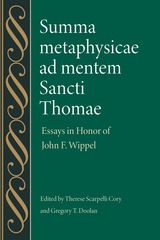 Summa metaphysicae ad mentem Sancti Thomae: Essays in Honor of John F. Wippel
Therese Scarpelli Cory
Catholic University of America Press, 2023 This volume is a tribute to Fr. John F. Wippel. Following the philosophical order that Aquinas might have adopted “had he chosen to write a Summa metaphysicae”—an order that Wippel himself lays out in his Metaphysical Thought of Thomas Aquinas—these essays unfold new research on some of the most intriguing topics in Aquinas’s metaphysics, from the most recent generation of scholars formed by Wippel’s pioneering work.
The contributors address the discovery of being qua being via separation (Gregory T. Doolan), propter quid metaphysical demonstrations (Philip Neri Reese), the origins of the controversies about the real distinction between essence and esse (Mark Gossiaux), a defense of essence-realism as a key to the real distinction (David Twetten), the relationship of likeness and agency (Therese Scarpelli Cory), created form as act and potency (Stephen Brock), the variation of accidental forms (Gloria Frost), the possibility of angelic judgment (Francis Feingold), argumentation for the existence of God (Gaven Kerr), the propriety of “Qui Est” as a Divine Name (Brian Carl), ‘Beauty’ as a Divine Name (Michael Rubin), and God’s application of creaturely powers to action (Jason Mitchell).
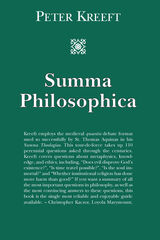 Summa Philosophica
Peter Kreeft
St. Augustine's Press, 2012 Next to the Socratic Method, the best method for organizing a logical debate over a controversial philosophical or theological issue is the method St. Thomas Aquinas uses in the Summa Theologiae. As the charm of the Socratic dialogue is its dramatic length, its uncertainty, and the psychological dimension of a clash between live characters, so the charm of the Summa method is the opposite: its condensation and its impersonality, objectivity, simplicity, directness, and logical clarity. Beginning philosophy students pick up both methods very quickly, and write adept imitations of them. It’s both profitable and fun to do it. Yet professionally philosophers have not followed these tried-and-true roads. Why not? Probably it is pride, the refusal to stoop to conquer, the confusion of “stooped” with “stupid.” Peter Kreeft has written over a dozen books of Socratic dialogues, and readers like them – they like the form, or format, irrespective of the content. There is no reason that the Summa format cannot produce the same results. It is a very simple five-step procedure: (1) the formulation of the question; (2) the opponent’s leading objections to your answer or thesis, formulated as clearly and fairly and strongly as possible; (3) a short argument from some recognized past authority for your thesis; (4) your own longer, original argument; and (5) a refutation of each objection, “deconstructing” it and showing how and where it went wrong . . . all in one or two pages, severely condensed, clear and simple (and therefore usually in syllogisms, the clearest and simplest and most direct form of logical argument). Kreeft has taken 110 of the most important and most often argued-about questions in each major division of philosophy and applied this method to it. The answers usually match common sense (and therefore Aristotle’s philosophy and Aquinas’s theology). At the very least, this is a useful philosophical reference book for arguments; not necessarily the elaborate and artificial arguments that might occur to contemporary “analytic” philosophers, but the arguments ordinary people would give, and still give on both sides of these great questions. Why no one has written such a book before is mind-boggling. We fully expect that many readers of this book will imitate it, as Kreeft has imitated Aquinas. This book is pregnant with many children.
 Summa Technologiae
Stanislaw Lem
University of Minnesota Press, 2014
The Polish writer Stanislaw Lem is best known to English-speaking readers as the author of the 1961 science fiction novel Solaris, adapted into a meditative film by Andrei Tarkovsky in 1972 and remade in 2002 by Steven Soderbergh. Throughout his writings, comprising dozens of science fiction novels and short stories, Lem offered deeply philosophical and bitingly satirical reflections on the limitations of both science and humanity.
In Summa Technologiae—his major work of nonfiction, first published in 1964 and now available in English for the first time—Lem produced an engaging and caustically logical philosophical treatise about human and nonhuman life in its past, present, and future forms. After five decades Summa Technologiae has lost none of its intellectual or critical significance. Indeed, many of Lem’s conjectures about future technologies have now come true: from artificial intelligence, bionics, and nanotechnology to the dangers of information overload, the concept underlying Internet search engines, and the idea of virtual reality. More important for its continued relevance, however, is Lem’s rigorous investigation into the parallel development of biological and technical evolution and his conclusion that technology will outlive humanity. Preceding Richard Dawkins’s understanding of evolution as a blind watchmaker by more than two decades, Lem posits evolution as opportunistic, shortsighted, extravagant, and illogical. Strikingly original and still timely, Summa Technologiae resonates with a wide range of contemporary debates about information and new media, the life sciences, and the emerging relationship between technology and humanity.
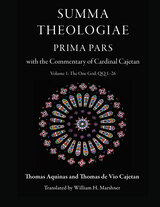 Summa Theologiae, Prima Pars: Volume 1, The One God, QQ 1-26: With the Commentary of Cardinal Cajetan
Thomas Aquinas
Catholic University of America Press, 2023 When Leo XII promulgated Aeterni Patris in 1879, he stipulated that the “Leonine,” or official, edition of the Summa should always be printed in conjunction with Cajetan’s Commentary. For five hundred years they were studied together. Generations were trained by reading through the Summa article by article with Cajetan’s commentaries in hand. Early printed editions of the Summa typically included them in a Talmudic arrangement, as marginal text running around each article by Aquinas. This edition imitates that example.
Recently, serious thinkers of all denominations – and none – have found new reasons to be interested in St. Thomas. His text is deceptively simple, yet important issues are handled in every article, sometimes below the surface. Cajetan extracts these hidden issues, and explains and elaborates on them with remarkable affinity to modern analytical philosophy. Part of that affinity lies in the use of modal logic, a tool whose importance was overlooked between the Renaissance and the twentieth century. The time is ripe for an analytically-inspired translation of Thomas: hence this volume.
Never until now has Cajetan’s Commentary been put into English in its entirety. William Marshner’s translation is consistent with fidelity to the technical force of the original. The translator’s footnotes acknowledge what empirical science has made obsolete in the work of St. Thomas, and also make clear how much today’s science would have saved Thomas useless labor. This volume will, for the first time, make Cajetan’s help available to the modern reader.
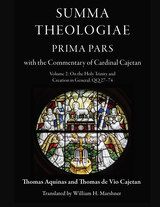 Summa Theologiae, Prima Pars: Volume 2, On the Holy Trinity and Creation in General, QQ 27-74: With the Commentary of Cardinal Cajetan
Thomas Aquinas
Catholic University of America Press, 2023 When Leo XII promulgated Aeterni Patris in 1879, he stipulated that the “Leonine,” or official, edition of the Summa should always be printed in conjunction with Cajetan’s Commentary. For five hundred years they were studied together. Generations were trained by reading through the Summa article by article with Cajetan’s commentaries in hand. Early printed editions of the Summa typically included them in a Talmudic arrangement, as marginal text running around each article by Aquinas. This edition imitates that example.
Recently, serious thinkers of all denominations – and none – have found new reasons to be interested in St. Thomas. His text is deceptively simple, yet important issues are handled in every article, sometimes below the surface. Cajetan extracts these hidden issues, and explains and elaborates on them with remarkable affinity to modern analytical philosophy. Part of that affinity lies in the use of modal logic, a tool whose importance was overlooked between the Renaissance and the twentieth century. The time is ripe for an analytically-inspired translation of Thomas: hence this volume.
Never until now has Cajetan’s Commentary been put into English in its entirety. William Marshner’s translation is consistent with fidelity to the technical force of the original. The translator’s footnotes acknowledge what empirical science has made obsolete in the work of St. Thomas, and also make clear how much today’s science would have saved Thomas useless labor. This volume will, for the first time, make Cajetan’s help available to the modern reader.
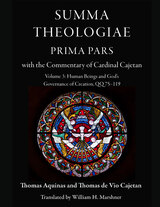 Summa Theologiae, Prima Pars: Volume 3, Human Beings and God's Governance of Creation, QQ 75-119: With the Commentary of Cardinal Cajetan
Thomas Aquinas
Catholic University of America Press, 2023 When Leo XII promulgated Aeterni Patris in 1879, he stipulated that the “Leonine,” or official, edition of the Summa should always be printed in conjunction with Cajetan’s Commentary. For five hundred years they were studied together. Generations were trained by reading through the Summa article by article with Cajetan’s commentaries in hand. Early printed editions of the Summa typically included them in a Talmudic arrangement, as marginal text running around each article by Aquinas. This edition imitates that example.
Recently, serious thinkers of all denominations – and none – have found new reasons to be interested in St. Thomas. His text is deceptively simple, yet important issues are handled in every article, sometimes below the surface. Cajetan extracts these hidden issues, and explains and elaborates on them with remarkable affinity to modern analytical philosophy. Part of that affinity lies in the use of modal logic, a tool whose importance was overlooked between the Renaissance and the twentieth century. The time is ripe for an analytically-inspired translation of Thomas: hence this volume.
Never until now has Cajetan’s Commentary been put into English in its entirety. William Marshner’s translation is consistent with fidelity to the technical force of the original. The translator’s footnotes acknowledge what empirical science has made obsolete in the work of St. Thomas, and also make clear how much today’s science would have saved Thomas useless labor. This volume will, for the first time, make Cajetan’s help available to the modern reader.
Summer for the Gods: The Scopes Trial and America's Continuing Debate over Science and Religion
Edward J. Larson
Harvard University Press The Scopes "Monkey Trial" marked a watershed in our national discussion of science and religion. In addition to symbolizing the clash between evolutionist and creationist camps, the trial helped shape the development of both popular religion and constitutional law in the United States, serving as a precedent for more recent legal and political battles. Pairing new archival material from both the Bryan prosecution and the Darrow defense with Larson's keen historical and legal analysis, Summer for the Gods offers a fresh interpretation of a pivotal event in American history.
 Summer Light
Roxana Robinson
University Press of New England, 1995 Roxana Robinson's great gift for the telling detail and strong sense of the emotional shoals lurking just beneath even the calmest surface have inspired comparisons to literary greats like John Cheever, Henry James, and Edith Wharton. In her first novel, we meet Laura, a 29-year-old wife, mother, sister, friend, lover, and erstwhile photographer whose life is painfully out of focus. A month's vacation on the Maine coast with her son, her lover, Ward, and her sister's family is supposed to be an idyllic period of sustenance and calm, but for Laura, who believes that "entropy governed the world, the universe, and the dinner hour," it turns into the ultimate test of her ability to trust herself and others. With trademark intensity and a deft touch for character and place, Robinson creates a perceptive, believable, and gently humorous portrait of an individual "waiting for something that would set her life in order." Laura is as much a study of light and shadow as the photographs she takes. Beautiful but insecure, talented but unwilling to take risks, loved but unable to make a commitment, she is paralyzed by fear and locked into a stasis that Ward is no longer willing to accept. "You don't dare take a stand on anything," he tells her. “You're so terrified of failure you don't dare do anything.” When her estranged husband arrives for a weekend visit, however, the emotional collision rocks Laura's inaction, causing a tiny shake of the kaleidoscope that creates a vastly different pattern. The image is razor sharp at last: "As though she were changing lenses, as though she had suddenly discovered another light source," she sees that her life is her own. That new understanding empowers her to make a symbolic -- and a literal -- leap of faith that saves her own life and the lives of those she loves.
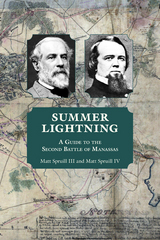 Summer Lightning: A Guide to the Second Battle of Manassas
Matt Spruill III
University of Tennessee Press, 2013 From August 28 to August 30, 1862, Union and Confederate armies fought for the second time on the Manassas, Virginia, battlefield. The Battle of Second Manassas, or Second Bull Run, was the culmination of General Robert E. Lee’s campaign after the Seven Days to shift the fighting from the vicinity of Richmond to northern Virginia. Lee’s victory placed him in a position to carry the war north of the Potomac River and set the stage for the Maryland Campaign of 1862.
Summer Lightning is a battlefield guide that sequentially follows the fighting from Brawner’s Farm on August 28 to the final Confederate attacks against Union positions at Henry Hill on August 30. Summer Lightning uses a series of twenty “stops” with multiple positions to guide the reader through the battlefield and to positions and routes used by both armies, thus providing a “you are there” view of the engagement.
With easy-to-follow directions, detailed tactical maps, extensive eyewitness accounts, and editorial analysis, the reader is transported to the center of the action. A detailed order of battle for both armies is provided, as well as information on important sites away from the main battlefield.
Summer of Caprice
Vladislav Vancura
Karolinum Press, 2006 Summer of Caprice, a captivating comic novel first published in 1926, is a classic of Czech literature, yet it is little known elsewhere. Commonly considered untranslatable due to the complexities of the text, which is characterized by a playful narrative and an exceptional mastery of language, and its profound cultural context, it is rendered here in English that beautifully captures Vladislav Vančura’s experimental style—or, as the author himself called it, his “poetism in prose.” Mixing the archaic with the innovative, raw colloquialisms with biblical quotations, Summer of Caprice opens an uproarious window onto the Czech spirit, humor, and way of life.
Summer of Caprice
Vladislav Vancura
Karolinum Press, 2016 Summer of Caprice, a captivating comic novel first published in 1926, is a classic of Czech literature, yet it is little known elsewhere. Commonly considered untranslatable due to the complexities of the text, which is characterized by a playful narrative and an exceptional mastery of language, and its profound cultural context, it is rendered here in English that beautifully captures Vladislav Vančura’s experimental style—or, as the author himself called it, his “poetism in prose.” Mixing the archaic with the innovative, raw colloquialisms with biblical quotations, Summer of Caprice opens an uproarious window onto the Czech spirit, humor, and way of life.
 The Summer of Her Baldness: A Cancer Improvisation
By Catherine Lord
University of Texas Press, 2004 "No eyebrows. No eyelashes. When it rains the water will run straight down into my eyes," Catherine Lord wrote before her hair fell out during chemotherapy. Propelled into an involuntary performance piece occasioned by the diagnosis of breast cancer, Lord adopted the online persona of Her Baldness—an irascible, witty, polemical presence who speaks candidly about shame and fear to her listserv audience. While Lord suffers from unwanted isolation and loss of control as her treatment progresses, Her Baldness talks back to the society that stigmatizes bald women, not to mention middle-aged lesbians with a life-threatening disease. In this irreverent and moving memoir, Lord draws on the e-mail correspondence of Her Baldness to offer an unconventional look at life with breast cancer and the societal space occupied by the seriously ill. She photographs herself and the rooms in which she negotiates her disease. She details the clash of personalities in support groups, her ambivalence about Western medicine, her struggles to maintain her relationship with her partner, and her bemusement when she is mistaken for a "sir." She uses these experiences—common to the one-in-eight women who will be diagnosed at some point with breast cancer—to illuminate larger issues of gender signifiers, sexuality, and the construction of community.
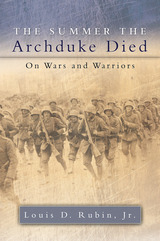 The Summer the Archduke Died: On Wars and Warriors
Louis D. Rubin, Jr.
University of Missouri Press, 2008
When World War II erupted, fifteen-year-old Louis Rubin pedaled his bike down to the Charleston harbor to see whether a German freighter might have come there to escape British warships, as had occurred in 1914. Although he went home disappointed, young Louis never lost his fascination with matters military.
Now one of America’s most esteemed literary scholars, Rubin again turns his thoughts to history—particularly military history—by sharing his lifelong interest in the First World War and its aftermath. The Summer the Archduke Died offers essays, beginning with the outbreak of the Great War in Europe in 1914 and covering events of subsequent years, that examine historical issues in a fresh way. These essays take in a panoramic view of German militarism, the American role in the war, and British and American politics and politicos. They convey the impact of the war on writers and include a critical review of Theodore Roosevelt’s life and legacy.
Rubin brings a keen eye for controversy to such matters as the battle of Jutland and Churchill’s stance on the war with Hitler. In a provocative essay on the New British Revisionism, he not only debunks recent criticism of Churchill but also examines the decline of the British class system. In “Ladies of the British Establishment,” he contrasts the politically notorious Mitford sisters with Violet Bonham Carter, who used her social position to advance the status of women in public life.
Ranging from the outbreak of the Great War to “A Certain Day in 1939” when European peace was shattered once more, Rubin’s lively pieces are rendered with the literary craftsmanship for which he is renowned. As informative as it is entertaining, The Summer the Archduke Died will appeal to aficionados of history and fine writing alike.
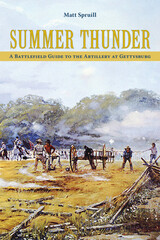 Summer Thunder: A Battlefield Guide to the Artillery at Gettysburg
Matt Spruill
University of Tennessee Press, 2010
Among the myriad books examining the Battle of Gettysburg (July 1–3, 1863), Summer Thunder is one of a kind. A terrific resource for is visitors to the national military park, it explores the clashing armies’ deployment of artillery throughout the battle—from one position to another, from one day to the next. Matt Spruill, a retired U.S. Army colonel and former licensed Gettysburg guide, carefully takes readers to every point on the battlefield where artillery was used, and combining his own commentary with excerpts from the Official Records and other primary sources, he reveals the tactical thinking of both Union and Confederate commanders.
Spruill uses a sequential series of thirty-five “stops,” complete with driving instructions and recent photographs, to guide readers around the park and orient them about where the opposing units were placed and what happened there. Detailed maps depict the battlefield as it was in 1863 and are marked with artillery positions, including the number of guns in action with each battery. Meanwhile, the passages from primary sources allow the reader to see key events as the actual participants saw them. The book also brims with information
about the various artillery pieces used by both sides, from howitzers to Parrott rifles and Napoleon field guns, and the critical role they played over the course of the battle, right up its outcome.
Summer Thunder devotes a chapter to each of the three days of the historic devotes a chapter to each of the three days of the historic Summer Thunder engagement between the Army of the Potomac and the Army of Northern Virginia. One can follow the battle chronologically in its entirety from Stop 1 to Stop 35, or concentrate on a specific day or a specific area. In fact, the maps and orientation information are of such detail that the book can be used even without being on the battlefield, making it an invaluable reference work for expert and novice alike.
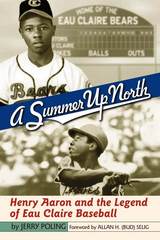 A Summer Up North: Henry Aaron and the Legend of Eau Claire Baseball
Jerry Poling
University of Wisconsin Press, 2002 June 12, 1952—only a local sportswriter showed up at the Eau Claire airport to greet a newly signed eighteen-year-old shortstop from Alabama toting a cardboard suitcase. "I was scared as hell," said Henry Aaron, recalling his arrival as the new recruit on the city’s Class C minor league baseball team.
Forty-two years later, as Aaron approached the stadium where the Eau Claire Bears once played, an estimated five thousand people surrounded a newly raised bronze statue of a young "Hank" Aaron at bat. "I had goosebumps," he said later. "A lot of things happened to me in my twenty-three years as a ballplayer, but nothing touched me more than that day in Eau Claire." For the people of Eau Claire, Aaron’s summer two years before his Major League debut with the Milwaukee Braves symbolizes a magical time, when baseball fans in a small city in northern Wisconsin could live a part of the dream.
 A Summer with Pascal
Antoine Compagnon
Harvard University Press, 2024 From an eminent scholar, a spirited introduction to one of the great polymaths in the history of Europe.
Blaise Pascal (1623–1662) is best known in the English-speaking world for his contributions to mathematics and physics, with both a triangle and a law in fluid mechanics named after him. Meanwhile, the classic film My Night at Maud’s popularized Pascal’s wager, an invitation to faith that has inspired generations of theologians. Despite the immensity of his reputation, few read him outside French schools. In A Summer with Pascal, celebrated literary critic Antoine Compagnon opens our minds to a figure somehow both towering and ignored.
Compagnon provides a bird’s-eye view of Pascal’s life and significance, making this volume an ideal introduction. Still, scholars and neophytes alike will profit greatly from his masterful readings of the Pensées—a cornerstone of Western philosophy—and the Provincial Letters, in which Pascal advanced wry theological critiques of his contemporaries. The concise, taut chapters build upon one another, easing into writings often thought to be forbidding and dour. With Compagnon as our guide, these works are not just accessible but enchanting.
A Summer with Pascal brings the early modern thinker to life in the present. In an age of profound existential doubt and assaults on truth and reason, in which religion and science are so often crudely opposed, Pascal’s sophisticated commitment to both challenges us to meet the world with true intellectual vigor.
 The Summers
Ronya Othmann, translated by Gary Schmidt
University of Wisconsin Press, 2023 Ronya Othmann’s debut novel narrates the coming of age of Leyla, a Yazidi–Kurdish–German girl. She spends the school year in her mother’s home country of Germany but travels every summer to her father’s home village in Syria, near the Turkish border. She knows its smells and tastes. She knows its stories. She knows where the Yazidi villagers keep their suitcases hidden, should they need to escape again. And she watches from afar, horrified, as ISIS troops move on the village, threatening the lives of her grandparents, aunts, uncles, cousins, and friends.
Leyla’s sexual awakening proves far less traumatic than her growing disenchantment with her German classmates and friends, who appear completely indifferent to the fate of her Yazidi community. Thoughtful and poignant, The Summers addresses issues of gender, sexuality, cultural difference, politics, and identity. Othmann draws readers into multiple worlds, ultimately revealing the hopes and dreams that bind us all together when forces threaten to tear us apart.
 Summers Off?: A History of U.S. Teachers' Other Three Months
Christine A. Ogren
Rutgers University Press, 2026 Since the nine-month school year became common in the United States during the 1880s, schoolteachers have never really had summers off. Administrators instructed them to rest, as well as to study and travel, in the interest of creating a compliant workforce. Teachers, however, adapted administrators’ directives to pursue their own version of professionalization and to ensure their financial well-being. Summers Off explores teachers’ summer experiences between the 1880s and 1930s in institutes and association meetings; sessions at teachers colleges, Black colleges, and prestigious universities; work for wages or their family; tourism in the U.S. and Europe; and activities intended to be restful. This heretofore untold history reveals how teachers utilized the geographical and psychological distance from the classroom that summer provided, to enhance not only their teaching skills but also their professional and intellectual independence, their membership in the middle class, and, in the cases of women and Black teachers, their defiance of gender and race hierarchies.
 Summers with Juliet
Bill Roorbach
Ohio State University Press, 2000 They met in a bar on Martha’s Vineyard. Bill was instantly smitten—her cool beauty, her insouciance, her sassy youth—but Juliet was unimpressed. Even so, a courtship began, and for the next eight summers, in sublime settings across North America, Bill Roorbach and Juliet Karelsen made circuitous progress toward a lasting love, and finally, marriage. In charming fashion, Summers with Juliet tells this tale, but it also chronicles a second awakening, as Juliet rekindles in Bill his childhood enchantment with nature. Now marvelous creatures abound: giant ocean sunfish and wild turkeys, bellicose hummingbirds and canny trout, all of them images and explications of the many facets of Juliet. Landscapes hold new mysteries, too, and the author vividly describes his exuberant road trips with Juliet around the country, from the River of Promise in Montana, to the Gulf Coast of Florida. And at last, they come to a wooded lake in New Hampshire and the singular June day when “love’s all there, sweeter than the cake.”
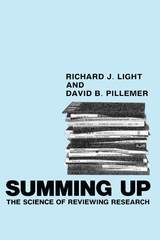 Summing Up: The Science of Reviewing Research
Richard J. Light and David B. Pillemer
Harvard University Press, 1984 How can a scientist or policy analyst summarize and evaluate what is already known about a particular topic? This book offers practical guidance.
The amount and diversity of information generated by academic and policy researchers in the contemporary world is staggering. How is an investigator to cope with the tens or even hundreds of studies on a particular problem? How can conflicting findings be reconciled? Richard Light and David Pillemer have developed both general guidelines and step-by-step procedures that can be used to synthesize existing data. They show how to apply quantitative methods, including the newest statistical procedures and simple graphical displays, to evaluate a mass of studies and combine separate data sets. At the same time, they insist on the value of qualitative information, of asking the right questions, and of considering the context in which research is conducted. The authors use exemplary reviews in education, psychology, health, and the policy sciences to illustrate their suggestions.
Written in nontechnical language and addressed to the beginning researcher as well as to the practicing professional, Summing Up will set a new standard for valid research reviews and is likely to become a methodological classic.
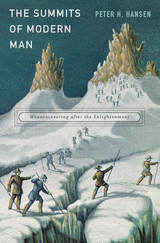 The Summits of Modern Man: Mountaineering after the Enlightenment
Peter H. Hansen
Harvard University Press, 2013 The history of mountaineering has long served as a metaphor for civilization triumphant. Once upon a time, the Alps were an inaccessible habitat of specters and dragons, until heroic men—pioneers of enlightenment—scaled their summits, classified their strata and flora, and banished the phantoms forever. A fascinating interdisciplinary study of the first ascents of the major Alpine peaks and Mount Everest, The Summits of Modern Man surveys the far-ranging significance of our encounters with the world’s most alluring and forbidding heights.
Our obsession with “who got to the top first” may have begun in 1786, the year Jacques Balmat and Michel-Gabriel Paccard climbed Mont Blanc and inaugurated an era in which Romantic notions of the sublime spurred climbers’ aspirations. In the following decades, climbing lost its revolutionary cachet as it became associated instead with bourgeois outdoor leisure. Still, the mythic stories of mountaineers, threaded through with themes of imperialism, masculinity, and ascendant Western science and culture, seized the imagination of artists and historians well into the twentieth century, providing grist for stage shows, poetry, films, and landscape paintings.
Today, we live on the threshold of a hot planet, where melting glaciers and rising sea levels create ambivalence about the conquest of nature. Long after Hillary and Tenzing’s ascent of Everest, though, the image of modern man supreme on the mountaintop retains its currency. Peter Hansen’s exploration of these persistent images indicates how difficult it is to imagine our relationship with nature in terms other than domination.
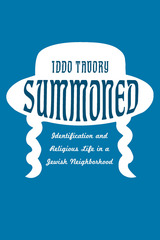 Summoned: Identification and Religious Life in a Jewish Neighborhood
Iddo Tavory
University of Chicago Press, 2016 On a typical weekday, men of the Beverly-La Brea Orthodox community wake up early, beginning their day with Talmud reading and prayer at 5:45am, before joining Los Angeles’ traffic. Those who work “Jewish jobs”—teachers, kosher supervisors, or rabbis—will stay enmeshed in the Orthodox world throughout the workday. But even for the majority of men who spend their days in the world of gentiles, religious life constantly reasserts itself. Neighborhood fixtures like Jewish schools and synagogues are always after more involvement; evening classes and prayers pull them in; the streets themselves seem to remind them of who they are. And so the week goes, culminating as the sabbatical observances on Friday afternoon stretch into Saturday evening. Life in this community, as Iddo Tavory describes it, is palpably thick with the twin pulls of observance and sociality.
In Summoned, Tavory takes readers to the heart of the exhilarating—at times exhausting—life of the Beverly-La Brea Orthodox community. Just blocks from West Hollywood’s nightlife, the Orthodox community thrives next to the impure sights, sounds, and smells they encounter every day. But to sustain this life, as Tavory shows, is not simply a moral decision they make. To be Orthodox is to be constantly called into being. People are reminded of who they are as they are called upon by organizations, prayer quorums, the nods of strangers, whiffs of unkosher food floating through the street, or the rarer Anti-Semitic remarks. Again and again, they find themselves summoned both into social life and into their identity as Orthodox Jews. At the close of Tavory’s fascinating ethnography, we come away with a better understanding of the dynamics of social worlds, identity, interaction and self—not only in Beverly-La Brea, but in society at large.
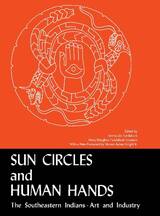 Sun Circles and Human Hands: The Southeastern Indians Art and Industries
Edited by Emma Lila Fundaburk and Mary Douglass Fundaburk Foreman
University of Alabama Press, 2001 This classic compendium of ancient Indian artifacts from the entire southeastern United States remains an indispensable reference source for professionals and enthusiasts alike. From utilitarian arrowheads to beautiful stone effigy pipes to ornately-carved shell disks, the photographs and drawings in Sun Circles and Human Hands present the archaeological record of the art and native crafts of the prehistoric southeastern Indians. Painstakingly compiled in the 1950s by two sisters who traveled the eastern United States interviewing archaeologists and collectors and visiting the major repositories, Sun Circles and Human Hands is remarkable for its breadth of illustration of Indian-made artifacts and its comprehensive documentation. Although research over the last 50 years has disproven many of the early theories reported in the text—which were not the editors' theories but those of the archaeologists of the day—the excellent illustrations of objects no longer available for examination have more than validated the lasting worth of this popular book. Broadly acclaimed when it first appeared, this new printing has the added value of Knight's foreword, which places the work in its proper context. Useful to museums, state and national parks, school libraries, gift stores, archaeological agencies, and private collections, Sun Circles and Human Hands is a rich pictorial survey accessible to anyone interested in early American Indian culture.
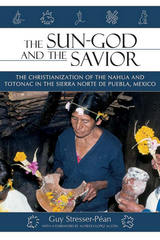 The Sun God and the Savior: The Christianization of the Nahua and Totonac in the Sierra Norte de Puebla, Mexico
Guy Stresser-Péan
University Press of Colorado, 2009 The first English translation of Guy Stresser-Péan's tour-de-force presents two decades of fieldwork in the Sierra Norte de Puebla, Mexico, where native pre-Hispanic pagan beliefs blended with traditional Catholic evangelization from the sixteenth century and the more recent intrusion of modernism.
The Indians of the Sierra Norte de Puebla are deeply devoted to Christianity, but their devotion is seamlessly combined with pagan customs, resulting in a hybrid belief system that is not wholly indigenous, yet not wholly Christian. The syncretism practiced here has led the Totonac and Nahua people to identify Christ with the Sun God, a belief expressed symbolically in ritual practices such as the Dance of the Voladores.
Spanning the four centuries from the earliest systematic campaign against Nahua ritual practices - Zumárraga's idolatry trials of 1536-1540 - to the twentieth century, Stresser-Péan contextualizes Nahua and Totonac ritual practices as a series of responses to Christian evangelization and the social reproduction of traditional ritual practices. The Sun God and the Savior is a monumental work on the ethnographic and historical knowledge of the peoples of the Sierra Norte.
 The Sun in the Church: Cathedrals as Solar Observatories
J. L. Heilbron
Harvard University Press, 1999 Between 1650 and 1750, four Catholic churches were the best solar observatories in the world. Built to fix an unquestionable date for Easter, they also housed instruments that threw light on the disputed geometry of the solar system, and so, within sight of the altar, subverted Church doctrine about the order of the universe.
A tale of politically canny astronomers and cardinals with a taste for mathematics, The Sun in the Church tells how these observatories came to be, how they worked, and what they accomplished. It describes Galileo's political overreaching, his subsequent trial for heresy, and his slow and steady rehabilitation in the eyes of the Catholic Church. And it offers an enlightening perspective on astronomy, Church history, and religious architecture, as well as an analysis of measurements testing the limits of attainable accuracy, undertaken with rudimentary means and extraordinary zeal. Above all, the book illuminates the niches protected and financed by the Catholic Church in which science and mathematics thrived.
Superbly written, The Sun in the Church provides a magnificent corrective to long-standing oversimplified accounts of the hostility between science and religion.
The Sun in Time
Edited by C. P. Sonett, M. S. Giampapa, and M. S. Matthews
University of Arizona Press, 1991 An interdisciplinary approach to solar physics, as eighty-nine contributors trace the evolution of the Sun and provide a review of our current understanding of both its structure and its role in the origin and evolution of the solar system.
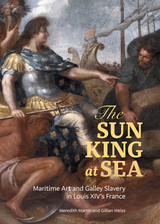 The Sun King at Sea: Maritime Art and Galley Slavery in Louis XIV's France
Meredith Martin
J. Paul Getty Trust, The, 2022 Winner of the 2023 Leo Gershoy Award 2023 Winner of The David H. Pinkney Prize Honorable Mention for The Mediterranean Seminar Best Book Prize 2023 Winner of the 2022 Kenshur Prize Shortlisted for Apollo Magazine's 2022 Book of the Year
This richly illustrated volume, the first devoted to maritime art and galley slavery in early modern France, shows how royal propagandists used the image and labor of enslaved Muslims to glorify Louis XIV.
Mediterranean maritime art and the forced labor on which it depended were fundamental to the politics and propaganda of France’s King Louis XIV (r. 1643–1715). Yet most studies of French art in this period focus on Paris and Versailles, overlooking the presence or portrayal of galley slaves on the kingdom’s coasts. By examining a wide range of artistic productions—ship design, artillery sculpture, medals, paintings, and prints—Meredith Martin and Gillian Weiss uncover a vital aspect of royal representation and unsettle a standard picture of art and power in early modern France.
With an abundant selection of startling images, many never before published, The Sun King at Sea emphasizes the role of esclaves turcs (enslaved Turks)—rowers who were captured or purchased from Islamic lands—in building and decorating ships and other art objects that circulated on land and by sea to glorify the Crown. Challenging the notion that human bondage vanished from continental France, this cross-disciplinary volume invites a reassessment of servitude as a visible condition, mode of representation, and symbol of sovereignty during Louis XIV’s reign.
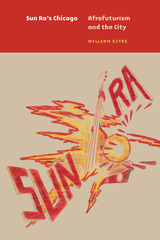 Sun Ra's Chicago: Afrofuturism and the City
William Sites
University of Chicago Press, 2020 Sun Ra (1914–93) was one of the most wildly prolific and unfailingly eccentric figures in the history of music. Renowned for extravagant performances in which his Arkestra appeared in neo-Egyptian garb, the keyboardist and bandleader also espoused an interstellar cosmology that claimed the planet Saturn as his true home. In Sun Ra’s Chicago, William Sites brings this visionary musician back to earth—specifically to the city’s South Side, where from 1946 to 1961 he lived and relaunched his career. The postwar South Side was a hotbed of unorthodox religious and cultural activism: Afrocentric philosophies flourished, storefront prophets sold “dream-book bibles,” and Elijah Muhammad was building the Nation of Islam. It was also an unruly musical crossroads where the man then known as Sonny Blount drew from an array of intellectual and musical sources—from radical nationalism, revisionist Christianity, and science fiction to jazz, blues, Latin dance music, and pop exotica—to construct a philosophy and performance style that imagined a new identity and future for African Americans. Sun Ra’s Chicago shows that late twentieth-century Afrofuturism emerged from a deep, utopian engagement with the city—and that by excavating the postwar black experience of Sun Ra’s South Side milieu, we can come to see the possibilities of urban life in new ways.
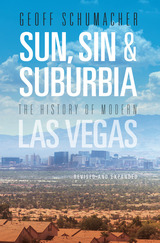 Sun, Sin & Suburbia: The History of Modern Las Vegas, Revised and Expanded
Geoff Schumacher
University of Nevada Press, 2015 More than forty million visitors per year travel to Sin City to visit the gambling mecca of the world. But gambling is only one part of the city’s story. In this carefully documented history, Geoff Schumacher tracks the rise of Las Vegas, including its vital role during World War II; the rise of the Strip in the 1950s; the explosive growth of the 1990s; and the colossal collapse triggered by the real estate bust and economic crisis of the mid-2000s. Schumacher surveys the history of the iconic casinos, debunking myths and highlighting key players such as Howard Hughes, Kirk Kerkorian, and Steve Wynn.
Schumacher’s history also profiles the Las Vegas where more than two million people live. He explores the neighborhoods sprawling beyond the Strip’s neon gleam and uncovers a diverse community offering much more than table games, lounge acts, and organized crime. Schumacher discusses contemporary Las Vegas, charting its course from the nation’s fastest-growing metropolis to one of the Great Recession’s most battered victims.
Sun, Sin & Suburbia will appeal to tourists looking to understand more than the glitz and glitter of Las Vegas and to newcomers who want to learn about their new hometown. It will also be an essential addition to any longtime Nevadan’s library of local history.
First published in 2012 by Stephens Press, this paperback edition is now available from the University of Nevada Press.
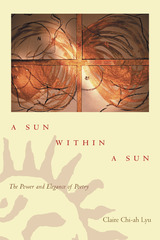 A Sun within a Sun: The Power and Elegance of Poetry
Claire Chi-ah Lyu
University of Pittsburgh Press, 2007
A Sun within a Sun is a sustained poetic reflection on the enterprise of poetry, on what poetry is and might be, not only for poet and theorist but also for reader, critic, teacher, and student. It sees poetry as life at its most genuine.
Using Baudelaire and Mallarmé as principal examples, but drawing on a wide range of poets and thinkers, from Greek mythology to Poe, Rimbaud, Rilke, and Blake; from Nietzsche, Gilles Deleuze, and Italo Calvino to William James and Henry Miller, Claire Chi-ah Lyu challenges contemporary poetic theory, using precise and acute deconstruction of poetic imagery to reconstruct language so that it celebrates both meaning and beauty.
<I>A Sun within a Sun</I> explores the notions of lightness and weight, discipline and indulgence, freedom and loss of will that are inherent in the poetic enterprise. It poses that lightness, discipline, freedom, and risk are essential for an approach to the enigma of beauty through an elegant shaping of form that holds true not only in poetry but also in pure science and even fashion. Poetry is a language within a language, a heightened and intense awareness of what words mean and what they can do, at its best creating an intensity of a sun within a sun. The poet and reader of poetry must take the risk Icarus took of approaching the sun, for without the risk there is no fulfillment.
A Sun within a Sun seeks a shaping of form and content that discovers poetry as power, as a practice of life that honors and makes possible both thought and feeling.
 Sunbelt Capitalism and the Making of the Carceral State
Kirstine Taylor
University of Chicago Press, 2025 The story of how the American South became the most incarcerated region in the world’s most incarcerated nation. Sunbelt Capitalism and the Making of the Carceral State examines the evolution of southern criminal punishment from Jim Crow to the dawn of mass incarceration, charting this definitive era of carceral transformation and expansion in the southern United States. The demise of the county chain gang, the professionalization of police, and the construction of large-scale prisons were among the sweeping changes that forever altered the southern landscape and bolstered the region’s capacity to punish. What prompted this southern revolution in criminal punishment? Kirstine Taylor argues that the crisis in the cotton fields and the arrival of Sunbelt capitalism in the south’s rising metropolises prompted lawmakers to build expansive, modern criminal punishment systems in response to Brown v. Board of Education and the Black freedom movements of the 1960s and ‘70s. Taking us inside industry-hunting expeditions, school desegregation battles, the sit-in movement, prisoners’ labor unions, and policy commissions, Taylor tells the story of how a modernizing south became the most incarcerated region in the globe’s most incarcerated nation.
 Sunbelt Capitalism and the Making of the Carceral State
Kirstine Taylor
University of Chicago Press, 2025 This is an auto-narrated audiobook version of this book.
The story of how the American South became the most incarcerated region in the world’s most incarcerated nation. Sunbelt Capitalism and the Making of the Carceral State examines the evolution of southern criminal punishment from Jim Crow to the dawn of mass incarceration, charting this definitive era of carceral transformation and expansion in the southern United States. The demise of the county chain gang, the professionalization of police, and the construction of large-scale prisons were among the sweeping changes that forever altered the southern landscape and bolstered the region’s capacity to punish. What prompted this southern revolution in criminal punishment? Kirstine Taylor argues that the crisis in the cotton fields and the arrival of Sunbelt capitalism in the south’s rising metropolises prompted lawmakers to build expansive, modern criminal punishment systems in response to Brown v. Board of Education and the Black freedom movements of the 1960s and ‘70s. Taking us inside industry-hunting expeditions, school desegregation battles, the sit-in movement, prisoners’ labor unions, and policy commissions, Taylor tells the story of how a modernizing south became the most incarcerated region in the globe’s most incarcerated nation.
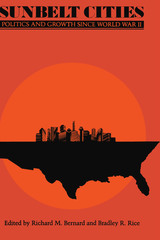 Sunbelt Cities: Politics and Growth since World War II
Edited by Richard M. Bernard and Bradley R. Rice
University of Texas Press, 1983 Between 1940 and 1980, the Sunbelt region of the United States grew in population by 112 percent, while the older, graying Northeast and Midwest together grew by only 42 percent. Phoenix expanded by an astonishing 1,138 percent. San Diego, Houston, Dallas–Fort Worth, Tampa, Miami, and Atlanta quadrupled in size. Even a Sunbelt laggard such as New Orleans more than doubled its population. Sunbelt Cities brings together a collection of outstanding original essays on the growth and late-twentieth-century political development of the major metropolitan areas below the thirty-seventh parallel. The cities surveyed are Albuquerque, Atlanta, Dallas–Fort Worth, Houston, Los Angeles, Miami, New Orleans, Oklahoma City, Phoenix, San Antonio, San Diego, and Tampa. Each author examines the economic and social causes of postwar population growth in the city under consideration and the resulting changes in its political climate. Major causes of growth such as changing economic conditions, industrial recruitment, lifestyle preferences, and climate are discussed. Particular attention is paid to the role of the federal government, especially the Pentagon, in encouraging development in the Sunbelt. Describing characteristic political developments of many of these cities, the authors note shifting political alliances, the ouster of machines and business elites from political power, and the rise of minority and neighborhood groups in local politics. Sunbelt Cities is the first full-scale scholarly examination of the region popularly conceived as the Sunbelt. As one of the first works to thoroughly examine a wide range of cities within the region, it has served as a standard reference on the area for some time.
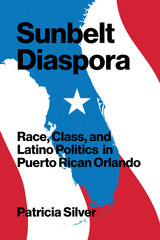 Sunbelt Diaspora: Race, Class, and Latino Politics in Puerto Rican Orlando
By Patricia Silver
University of Texas Press, 2020 2021 — Silver Medal, Raul Yzaguirre Best Political/Current Affairs Book – International Latino Book Awards, Latino Literacy Now An in-depth look at an emerging Latino presence in Orlando, Florida, where Puerto Ricans and others navigate differences of race, class, and place of origin in their struggle for social, economic, and political belonging. Puerto Ricans make up half of Orlando-area Latinos, arriving from Puerto Rico as well as from other long-established diaspora communities to a place where Latino politics has long been about Cubans in Miami. Together with other Latinos from multiple places, Puerto Ricans bring diverse experiences of race and class to this Sunbelt city. Tracing the emergence of the Puerto Rican and Latino presence in Orlando from the 1940s through an ethnographic moment of twenty-first-century electoral redistricting, Sunbelt Diaspora provides a timely prism for viewing how differences of race, class, and place play out in struggles to claim political, social, and economic ground for Latinos. Drawing on over a decade of ethnographic, oral history, and archival research, Patricia Silver situates her findings in Orlando’s historically black-white racial landscape, post-1960s claims to “color-blindness,” and neoliberal celebrations of individualism. Through the voices of diverse participants, Silver brings anthropological attention to the question of how social difference affects collective identification and political practice. Sunbelt Diaspora asks what constitutes community and how criteria for membership and legitimate representation are negotiated.
Sundae Best: History of Soda Fountains
Anne Cooper Funderburg
University of Wisconsin Press, 2001 This is the first comprehensive, documented history of the soda fountain. For one hundred fifty years, this popular institution was a community social center, both in big cities and small towns.
The evolution of the soda fountain reflected momentous developments in American history— urbanization, the temperance movement and Prohibition, the Great Depression, technical progress, the decline of Main Street, and the rise of car culture and growth of suburbia. The fountain’s evolution was also closely tied to trends in retailing, food service, lifestyles, and the decorative arts.
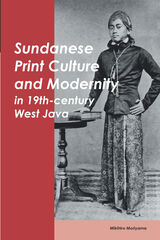 Sundanese Print Culture and Modernity in 19th Century West Java
Mikihiro Moriyama
National University of Singapore Press, 2005 Sundanese Print Culture and Modernity in 19th Century West Java traces the development of modern printed books written in Sundanese, the dominant language in West Java, Indonesia, and the mother tongue of about 30 million people.
Starting with the 'discovery' of Sundanese by Europeans in the early 19th century, Mikihiro Moriyama follows the developments in the ensuing century when a small group of Dutch scholars and colonial officials reshaped the language and its literature over the next one hundred years. Schools taught Sundanese, and printed materials based on western concepts began to influence indigenous writing and oral tradition. The imposition of European standards of literary aesthetics shaped a modernity that rejected traditional knowledge in favour of rational and empirical paradigms. Interest in traditional poetry and its mythologies declined, and new forms of prose, including novels, captured the attention of the reading public. These materials promoted useful knowledge and morality, and encouraged deference and loyalty towards colonial authority.
Early in the 20th century, the establishment of the Commissie voor de Inlandsche School- en Volkslectuur (Committee for Indigenous Schoolbooks and Popular Reading Books), a government-subsidised institution, provided the growing number of literate people in the Indies with 'good' and 'appropriate' reading materials. Its development marked the end of an era when Sundanese writing competed with Western-style schools and publications, and signalled the triumph of the new colonial modernity.
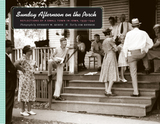 Sunday Afternoon on the Porch: Reflections of a Small Town in Iowa, 1939-1942
Everett W. Kuntz
University of Iowa Press, 2008 In 1939, just before graduating from high school in the small town of Ridgeway in northeast Iowa, Everett Kuntz spent his entire savings of $12.50 on a 35mm Argus AF camera. He made a camera case from a worn-out boot, scraps from a tin can, and a clasp from his mother’s purse. For the next several years, especially during the summers when he worked on his parents’ dairy farm, he clicked the shutter of his trusty Argus all around the quiet town.
Everett bought movie reel film in bulk from a mail-order house, rolled his own film, and developed it in a closet at home, but he never had the money to print his photographs. More than two thousand negatives stayed in a box while he married, raised a family, and worked as an electrical engineer in the Twin Cities. When he became ill with cancer in the fall of 2002—sixty years after he had developed the last of his bulk film—Everett opened his time capsule and printed the images from his youth. He died in 2003, having brought his childhood town back to life just as he was leaving it.
A sense of peace radiates from these images. Whether skinny-dipping in the Turkey River, wheelbarrow-racing, threshing oats, milking cows, visiting with relatives after church, or hanging out at the drugstore or the movies, Ridgeway’s hardworking citizens are modest and trusting and luminous in their graceful harmony and their unguarded affection for each other. Visiting the town in 2006 as he was writing the text to accompany these photographs, Jim Heynen crafted vignettes that perfectly complement these rediscovered images by blending fact and fiction to give context and voice to Ridgeway’s citizens.
Sunday Houses the Sunday House
Elizabeth Hughey
University of Iowa Press, 2007 In Sunday Houses the Sunday House, Elizabeth Hughey embraces the possibility that we can learn as much from objects as we can from other people, from the inanimate as much as the animate. Each poem descends upon a place and a time, takes a few notes, and then leaves quietly without slamming any doors. Sunday Houses the Sunday House reveals what the world is like when your attention is focused elsewhere, when your head is turned the other way. In ineffably beautiful verse, Hughey captures moments in time and place with confidence but without being judgmental. Although it may seem that the scope of these poems is rather small—a good party, a couple of eggs, a housekeeper's daydream—they reveal both a deep intelligence and a spirit of whimsy. Gertrude Stein wrote that she wanted to be "drunk with nouns," and in a sense that is what Hughey has accomplished here.
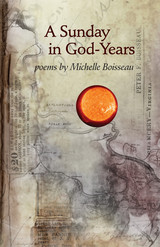 A Sunday in God-Years: Poems
Michelle Boisseau
University of Arkansas Press, 2009 A Sunday in God-Years takes its title from the notion that if we consider ourselves inside the long stretch of geologic time, human history happens in the blink of God’s eye as he rolls over during a Sunday nap. The book is centered around the long poem “A Reckoning” made up of fifteen shorter poems/sections (some sections are documents like wills and runaway slave notices). This long poem tries to reckon and recognize the sticky webs that bind the heirs of those who were slave holders (like the Boisseaus) and of those who were held as slaves. “A Reckoning” builds the context for the rest of the book which, among other things, looks through the metaphors from geology to confront the historic and personal: Boisseau’s paternal ancestors fled religious persecution in France in 1685 and soon after their arrival in Virginia became entangled in slave ownership. When one looks on human history through the lens of geologic time, when one shifts the scale from the now and near to the distant, and takes a sky-perch, like God, some fascinating things begins to happens. Looking down on us from a satellite, from a conjectural place in deeper spaces from which our cameras have never looked, or from a moment long before humans ventured from trees, human history is thrillingly diminished and immediate human compassion becomes essential as air.
The Sunday Paper: A Media History
Paul Moore and Sandra Gabriele
University of Illinois Press, 2022 Pullout sections, poster supplements, contests, puzzles, and the funny pages--the Sunday newspaper once delivered a parade of information, entertainment, and spectacle for just a few pennies each weekend. Paul Moore and Sandra Gabriele return to an era of experimentation in early twentieth-century news publishing to chart how the Sunday paper became an essential part of American leisure. Transcending the constraints of newsprint while facing competition from other media, Sunday editions borrowed forms from and eventually partnered with magazines, film, and radio, inviting people to not only read but watch and listen. This drive for mass circulation transformed metropolitan news reading into a national pastime, a change that encouraged newspapers to bundle Sunday supplements into a panorama of popular culture that offered something for everyone.
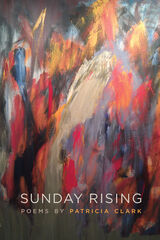 Sunday Rising
Patricia Clark
Michigan State University Press, 2013 Wallace Stevens, in his poem “A Postcard from the Volcano,” writes, “left what we felt / at what we saw.” Patricia Clark’s stunning fourth poetry collection, Sunday Rising, is full of such moments, carefully wrought and mined for their resonance. Haunting human forms rise from the underworld, seeking to communicate, longing for connection. In language as resounding and evocative as the subjects it describes, Sunday Rising questions the past, human relationships, the meaning of loss, and the author’s own heritage. With landscapes as familiar as Michigan and as distant as the shores of Western Europe, these poems bring to light the cracks and fissures in our world, amid lyric exhalations rising like clouds above the birds, trees, and coastlines, language capturing the poet’s spiritual longing as well as moments of passion and sorrow. From the first poem to the last, an intimate relationship with the physical world emerges. Its teachings, consolations, utterances, and echoes comprise a sense of discovery. The ethereal and often spiritual practice of seeing and taking note is celebrated, whether this process yields gemstones or ore, or words wrought into the music and imagery of poetry.
 Sundays
Thomas Gardner
Tupelo Press, 2020 Continuing the work begun in 2014’s Poverty Creek Journal, the lyric essays in Thomas Gardner’s Sundays focus on moments in our ordinary lives when something within us breaks and we are cast out to wander and sing, “feeling [our] way toward something [in the invisible] that will press back.” “Deep within us is a river, under it all, where everything comes undone,” Gardner writes, and over a year’s-worth of Sundays, in an improvisatory prose that “holds its breath at its [own] undoing,” he takes us there, urging us each to find that same space opening within. Twenty turkeys in the backyard, a walk with friends from overseas to a plunging waterfall, moments in the dark when flashes across the eye become a boat in rising wind tugging against its mooring—these lyric pieces, much like the sentences from Marilynne Robinson’s novel Housekeeping Gardner discovers one morning pasted on the doors and windows and staircases of the building he works in, offer us pieces of the ordinary set apart, “tiny squares of print, unfixed from narrative,” so carefully tied together under the surface that the everyday world, like Gardner’s building, seems everywhere “ringed and veined with thought.”
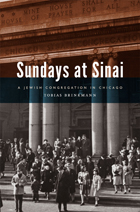 Sundays at Sinai: A Jewish Congregation in Chicago
Tobias Brinkmann
University of Chicago Press, 2012 First established 150 years ago, Chicago Sinai is one of America’s oldest Reform Jewish congregations. Its founders were upwardly mobile and civically committed men and women, founders and partners of banks and landmark businesses like Hart Schaffner & Marx, Sears & Roebuck, and the giant meatpacking firm Morris & Co. As explicitly modern Jews, Sinai’s members supported and led civic institutions and participated actively in Chicago politics. Perhaps most radically, their Sunday services, introduced in 1874 and still celebrated today, became a hallmark of the congregation. In Sundays at Sinai, Tobias Brinkmann brings modern Jewish history, immigration, urban history, and religious history together to trace the roots of radical Reform Judaism from across the Atlantic to this rapidly growing American metropolis. Brinkmann shines a light on the development of an urban reform congregation, illuminating Chicago Sinai’s practices and history, and its contribution to Christian-Jewish dialogue in the United States. Chronicling Chicago Sinai’s radical beginnings in antebellum Chicago to the present, Sundays at Sinai is the extraordinary story of a leading Jewish Reform congregation in one of America’s great cities.
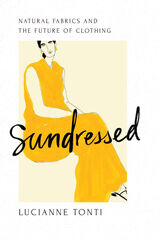 Sundressed: Natural Fabrics and the Future of Clothing
Lucianne Tonti
Island Press, 2022 For conscious consumers, buying clothes has never been more complicated. Even as fashion brands tout their sustainability, the industry is plagued by pollution, waste, and poor working conditions. If our clothes reflect our values, is it possible to be truly well-dressed?
Sustainable fashion consultant Lucianne Tonti answers with a resounding yes. Beautiful clothes made from natural fabrics including cotton, wool, flax, and cashmere can support rural communities and regenerate landscapes. They can also reduce waste—but only if we invest in garments that stand the test of time rather than chasing fast fashion trends.
In Sundressed, Tonti travels the world to showcase producers who are reforming the industry, from Mongolian goatherders, to Mulberry groves in China, and American hemp farms. Many of these innovations begin in the fields, with the cotton crops that will ultimately be spun into a soft T-shirt or the sheep’s wool than will be knitted into a cozy sweater. Fiber farmers are taking a page from the regenerative agriculture movement, giving back to the land as they tend it. Meanwhile, further down the supply chain, top designers are working with Indigenous communities to relearn the artistry of sewing—and reward them financially. And global brands, including Levi’s, are working to produce a pair of jeans that can withstand dozens of washes without any sign of wear.
Tonti also shows readers how accessible sustainable fashion can be. Not everyone can afford a designer shirt that was lovingly hand-sewn. But most of us can buy less, choose natural fabrics over polyester, thrift shop, and wear our clothes longer.
Sundressed is an exploration of a revolution taking place in fashion. And it is a love letter to clothing that embodies beauty and value, from farm to closet.
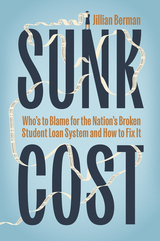 Sunk Cost: Who’s to Blame for the Nation’s Broken Student Loan System and How to Fix It
Jillian Berman
University of Chicago Press, 2025 Exposes the forgotten origins of the student loan system, how politicians have attempted to fix it, and the life-altering damage borrowers face.
Student-loan horror stories are a dime a dozen. But students today are faced with a seemingly insurmountable paradox: Research consistently shows that the clearest viable option to financial stability is a college degree. But if and when Americans decide to pursue diplomas, student loan payments quickly follow, and even after securing full-time employment, many borrowers struggle to make ends meet for years. In Sunk Cost, journalist Jillian Berman explores how the nation’s student loan program went from a well-intentioned initiative aimed at helping low- and middle-income students afford college to one that traps borrowers in long-term debt.
Berman interviewed dozens of borrowers and policymakers and dug into the archives to unearth the true causes of the student loan problem. A couple of generations ago, policy makers generously subsidized Americans’ college educations because they knew it would be advantageous for the entire country: a more educated population meant better quality of life for all. But today, higher education is viewed as an individual goal, so students and their families are expected to be on the hook for it themselves. Berman explains how this enormous shift happened, which industries benefit from it, and what it means for college-going Americans today. She shares real-life stories of college graduates who are being crushed under some of the harshest consequences of the student loan system. These borrowers pursued higher education in hopes of a better life and yet some have been trapped in debt for decades, making it difficult to put food on the table, much less imagine a life beyond debt.
By connecting personal accounts to the policy history of student loans, Berman makes clear that if American society continues to push students toward higher education, but fails to truly subsidize it, the financial strain will become unbearable for all but the most privileged. The current system is broken, but Berman proposes that significant changes are possible, and will require political will from state lawmakers and Congress, along with a philosophical shift, to tackle one of the largest consumer finance challenges of our time.
Sunland: A Novel
Don Waters
University of Nevada Press, 2013 Sid Dulaney, in his mid-thirties, between jobs and short on funds, has moved back to Tucson to take care of his beloved grandmother. To hold down the cost of her prescriptions, he reluctantly starts smuggling medications over the border. His picaresque misadventures involve the lovable eccentrics at her retirement village, Mexican gang threats, a voluptuous former babysitter, midnight voicemails from his exasperated ex-girlfriend, and, perplexingly, a giraffe. This first novel by the winner of the Iowa Short Fiction Award proves Waters is an important new voice in American fiction. A big, rollicking, character-filled novel, Sunland is an entertaining and humane view at life on the margins in America today.
Sunlit Riffles and Shadowed Runs: Stories of Fly Fishing in America
Kent Cowgill
University of Wisconsin Press, 2012 Ranging from the riotously comic to the nostalgic, edgy, and suspenseful, these sixteen stories offer richly developed and engaging portraits of characters across the spectrum of life, all absorbed by the thrill of fly fishing. A marriage betrayal on a trout stream in the north woods, a young boy’s coming of age as a fly fisherman in the Black Hills of South Dakota, angler rage on the redfish flats of the Gulf of Mexico, an epic quest for bullish rainbows in Montana’s celebrated Bighorn, the quiet mystique of Wisconsin’s Brule River, the intensity of combat fishing on a salmon pool in the Pacific Northwest, these are just a few of the fascinating tales of fly fishing offered in Sunlit Riffles and Shadowed Runs. Rendered in sparkling prose that will resonate with every angler, this collection will also delight any reader who enjoys outdoor pastimes.
Sunspots and the Sun King: Sovereignty and Mediation in Seventeenth-Century France
Ellen M. McClure
University of Illinois Press, 2006 Mediation, monarchy, and Louis XIV's attempts to legitimize his reign In order to assert his divine right, Louis XIV missed no opportunity to identify himself as God’s representative on earth. However, in Sunspots and the Sun King Ellen McClure explores the contradictions inherent in attempting to reconcile the logical and mystical aspects of divine right monarchy. McClure analyzes texts devoted to definitions of sovereignty, presents a meticulous reading of Louis XIV’s memoirs to the crown prince, and offers a novel analysis of diplomats and ambassadors as the mediators who preserved and transmitted the king’s authority. McClure asserts that these discussions, ranging from treatises to theater, expose incommensurable models of authority and representation permeating almost every aspect of seventeenth-century French culture.
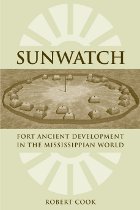 SunWatch: Fort Ancient Development in the Mississippian World
Robert Cook
University of Alabama Press, 2007 Focuses on the development of village social structure within a broad geographic and temporal framework, recognizing border areas as particularly dynamic contexts of social change
The last prehistoric cultures to inhabit the Middle Ohio Valley (ca. A.D. 1000–1650) are referred to as Fort Ancient societies, which exhibited a wide variety of Mississippian period characteristics. What is less well-known and little understood are the social processes by which Mississippian characteristics spread to Fort Ancient communities. Through a comprehensive study of SunWatch, one of the few thoroughly excavated Fort Ancient settlements, the author focuses on the development of village social structure within a broad geographic and temporal framework, recognizing border areas as particularly dynamic contexts of social change. As a fundamental study of social patterning of Fort Ancient villages, this work reveals the interrelationships of small social units in culture change and social structure development and provides a full reconsideration of the Mississippian dimensions of Fort Ancient societies and a model for future investigations of larger patterning in the lateprehistory of the region.
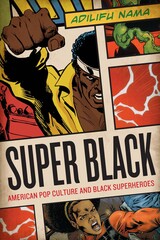 Super Black: American Pop Culture and Black Superheroes
By Adilifu Nama
University of Texas Press, 2011 Winner, American Book Award, Before Columbus Foundation, 2012 Super Black places the appearance of black superheroes alongside broad and sweeping cultural trends in American politics and pop culture, which reveals how black superheroes are not disposable pop products, but rather a fascinating racial phenomenon through which futuristic expressions and fantastic visions of black racial identity and symbolic political meaning are presented. Adilifu Nama sees the value—and finds new avenues for exploring racial identity—in black superheroes who are often dismissed as sidekicks, imitators of established white heroes, or are accused of having no role outside of blaxploitation film contexts. Nama examines seminal black comic book superheroes such as Black Panther, Black Lightning, Storm, Luke Cage, Blade, the Falcon, Nubia, and others, some of whom also appear on the small and large screens, as well as how the imaginary black superhero has come to life in the image of President Barack Obama. Super Black explores how black superheroes are a powerful source of racial meaning, narrative, and imagination in American society that express a myriad of racial assumptions, political perspectives, and fantastic (re)imaginings of black identity. The book also demonstrates how these figures overtly represent or implicitly signify social discourse and accepted wisdom concerning notions of racial reciprocity, equality, forgiveness, and ultimately, racial justice.
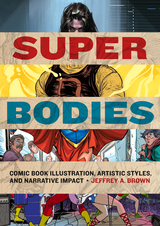 Super Bodies: Comic Book Illustration, Artistic Styles, and Narrative Impact
Jeffrey A. Brown
University of Texas Press, 2023 Finalist — San Diego Comic-Con International 2024 Eisner Award in Best Academic/Scholarly Work
2024 MPCA/ACA Best Book for Use in the Classroom, Midwest Popular Culture Association / Midwest American Culture Association (MPCA/ACA)
An examination of the art in superhero comics and how style influences comic narratives.
For many, the idea of comic book art implies simplistic four-color renderings of stiff characters slugging it out. In fact, modern superhero comic books showcase a range of complex artistic styles, with diverse connotations. Leading comics scholar Jeffrey A. Brown assesses six distinct approaches to superhero illustration—idealism, realism, cute, retro, grotesque, and noir—examining how each visually represents the superhero as a symbolic construct freighted with meaning. Whereas comic book studies tend to focus on text and narrative, Super Bodies gives overdue credit to the artwork, which is not only a principal source of the appeal of comic books but also central to the values these works embody. Brown argues that superheroes are to be taken not as representations of people but as iconic types, and the art conveys this. Even the most realistic comic illustrations are designed to suggest not persons but ideas—ideas about bodies and societies. Thus the appearance of superheroes both directly and indirectly influences the story being told as well as the opinions readers form concerning justice, authority, gender, puberty, sexuality, ethnicity, violence, and other concepts central to political and cultural life.
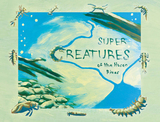 Super Creatures of the Huron River
Sara Adlerstein-Gonzalez
Michigan Publishing, 2021 Super Creatures of the Huron River aims to teach children about stream ecology, with a focus on the fascinating “bugs” that can be found in the Huron River. State and national inventories record one hundred dams on the Huron River system, which is typical of rivers and tributaries in the Great Lakes Basin. What was once a free-flowing system is now interrupted by dams on both the river’s main stem and its tributaries. Although dams can provide some benefits, they produce severe negative impacts on the rivers they harness. Dams alter a river’s chemical, physical, and biological processes, including fragmenting and blocking the natural movement of fish and other aquatic species. Although these negative impacts have become more obvious over the past two decades, the environmental costs of dams have only recently captured scientific attention. Super Creatures of the Huron River is a project conducted by a team of University of Michigan (UM) faculty and students, in collaboration with Huron River Watershed Council (HRWC) researchers. Sara Adlerstein developed the project. Working closely with her were Carolyn Berge, Jeffrey Evans, and Mike Wiley from UM and Paul Steen and Pam Labadie from HRWC. Illustrations for the book were created by master of science student Jennifer Fuller. The picture book will be used as a tool to support streamside activities led by the HRWC.
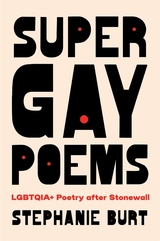 Super Gay Poems: LGBTQIA+ Poetry after Stonewall
Stephanie Burt
Harvard University Press, 2025 Winner of the 2025 New England Book Award for Poetry
A major poet and literary critic leads an aesthetic adventure through poems about queer experience, by writers who identify as lesbian, gay, bisexual, queer, trans, nonbinary, gender fluid, and more.
A groundbreaking anthology edited by acclaimed poet, critic, and scholar Stephanie Burt, Super Gay Poems brings together fifty-one works encompassing the wide range of queer and trans verse after the Stonewall uprising of 1969. Since that galvanizing moment, poetry has served as both a vehicle for queer liberation and a witness to its sometimes fragile, sometimes ebullient flourishing, across the world.
The poems in this anthology represent the great variety of queer and trans life itself. They include near-sonnets, iambic couplets, and rhymed quatrains; skinny dimeters and shaped poems; chatty free verse and intentionally inaccurate translations; the demotic and the rococo. Arranged in chronological order, the selections trace queer culture’s recent evolutions. Frank O’Hara, Audre Lorde, Judy Grahn, James Merrill, Thom Gunn, Jackie Kay, Adrienne Rich, Chen Chen, essa ranapiri, and The Cyborg Jillian Weise—poets widely known and poets who deserve to be—share their alienation, their euphoria, and their encounters with a protean community as it discovers new solidarities and new selves.
Each piece is paired with a concise, eye-opening essay in Burt’s trademark style, with verve and an inimitable literary ear. A treasury of aesthetic experience and insight, Super Gay Poems points protestors, political organizers, poetry lovers, and LGBTQIA+ readers toward many beautiful tomorrows.
 Superbugs: An Arms Race against Bacteria
William Hall, Anthony McDonnell, and Jim O'Neill
Harvard University Press, 2018 Antibiotics are powerful drugs that can prevent and treat infections, but they are becoming less effective as a result of drug resistance. Resistance develops because the bacteria that antibiotics target can evolve ways to defend themselves against these drugs. When antibiotics fail, there is very little else to prevent an infection from spreading.
Unnecessary use of antibiotics in both humans and animals accelerates the evolution of drug-resistant bacteria, with potentially catastrophic personal and global consequences. Our best defenses against infectious disease could cease to work, surgical procedures would become deadly, and we might return to a world where even small cuts are life-threatening. The problem of drug resistance already kills over one million people across the world every year and has huge economic costs. Without action, this problem will become significantly worse.
Following from their work on the Review on Antimicrobial Resistance, William Hall, Anthony McDonnell, and Jim O’Neill outline the major systematic failures that have led to this growing crisis. They also provide a set of solutions to tackle these global issues that governments, industry, and public health specialists can adopt. In addition to personal behavioral modifications, such as better handwashing regimens, Superbugs argues for mounting an offense against this threat through agricultural policy changes, an industrial research stimulus, and other broad-scale economic and social incentives.
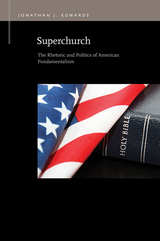 Superchurch: The Rhetoric and Politics of American Fundamentalism
Jonathan J. Edwards
Michigan State University Press, 2015 Christian Fundamentalism is a doctrine and a discourse in tension. Fundamentalists describe themselves as both marginal and a majority. They announce the imminent end of the world while building massive megachurches and political lobbying organizations. They speak of the need for purity and separation from the outside world while continually innovating in their search for more effective and persuasive ways to communicate with and convert outsiders. To many outsiders, Fundamentalist speech seems contradictory, irrational, intolerant, and dangerously antidemocratic. To understand the complexity of Fundamentalism, we have to look inside the tensions and the paradoxes. We have to take seriously the ways in which Fundamentalists describe themselves to themselves, and to do that, we must begin by exploring the central role of “the church” in Fundamentalist rhetoric and politics. Drawing on five fascinating case studies, Superchurch blends a complex yet readable treatment of rhetorical and political theory with a sophisticated approach to Fundamentalism that neither dismisses its appeal nor glosses over its irresolvable tensions. Edwards challenges theories of rhetoric, counterpublics, deliberation, and civility while offering critical new insights into the evolution and continuing influence of one of the most significant cultural and political movements of the past century.
Superconducting Magnetic Energy Storage in Power Grids
Mohd. Hasan Ali
The Institution of Engineering and Technology, 2022 Energy storage is key to integrating renewable power. Superconducting magnetic energy storage (SMES) systems store power in the magnetic field in a superconducting coil. Once the coil is charged, the current will not stop and the energy can in theory be stored indefinitely. This technology avoids the need for lithium for batteries. The round-trip efficiency can be greater than 95%, but energy is needed for the cooling of the superconducting coil, and the material is expensive. So far, SMES systems are primarily used for improving power quality through short time storage, but further applications are being researched.
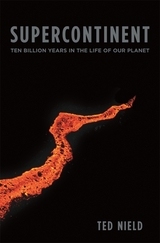 Supercontinent: Ten Billion Years in the Life of Our Planet
Ted Nield
Harvard University Press, 2007 To understand continental drift and plate tectonics, the shifting and collisions that make and unmake continents, requires a long view. The Earth, after all, is 4.6 billion years old. This book extends our vision to take in the greatest geological cycle of all—one so vast that our species will probably be extinct long before the current one ends in about 250 million years. And yet this cycle, the grandest pattern in Nature, may well be the fundamental reason our species—or any complex life at all—exists.
This book explores the Supercontinent Cycle from scientists' earliest inkling of the phenomenon to the geological discoveries of today—and from the most recent fusing of all of Earth's landmasses, Pangaea, on which dinosaurs evolved, to the next. Chronicling a 500-million-year cycle, Ted Nield introduces readers to some of the most exciting science of our time. He describes how, long before plate tectonics were understood, geologists first guessed at these vanishing landmasses and came to appreciate the significance of the fusing and fragmenting of supercontinents.
He also uses the story of the supercontinents to consider how scientific ideas develop, and how they sometimes escape the confines of science. Nield takes the example of the recent Indian Ocean tsunami to explain how the whole endeavor of science is itself a supercontinent, whose usefulness in saving human lives, and life on Earth, depends crucially on a freedom to explore the unknown.
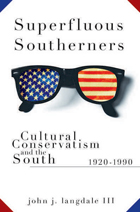 Superfluous Southerners: Cultural Conservatism and the South, 1920-1990
John J. Langdale III
University of Missouri Press, 2012 In Superfluous Southerners, John J. Langdale III tells the story of traditionalist conservatism and its boundaries in twentieth-century America. Because this time period encompasses both the rise of the modern conservative movement and the demise of southern regional distinctiveness, it affords an ideal setting both for observing the potentiality of American conservatism and for understanding the fate of the traditionalist “man of letters.” Langdale uses the intellectual and literary histories of John Crowe Ransom, Donald Davidson, and Allen Tate—the three principal contributors to the Agrarian manifesto I’ll Take My Stand—and of their three most remarkable intellectual descendants—Cleanth Brooks, Richard Weaver, and Melvin Bradford—to explore these issues. Langdale begins his study with some observations on the nature of American exceptionalism and the intrinsic barriers which it presents to the traditionalist conservative imagination. While works like Louis Menand’s The Metaphysical Club have traced the origins of modern pragmatic liberalism during the late nineteenth century, the nature of conservative thought in postbellum America remains less completely understood. Accordingly, Langdale considers the origins of the New Humanism movement at the turn of the twentieth century, then turning to the manner in which midwesterners Irving Babbitt and Paul Elmer Moore stirred the imagination of the southern Agrarians during the 1920s. After the publication of I’ll Take My Stand in 1930, Agrarianism splintered into three distinct modes of traditionalist conservatism: John Crowe Ransom sought refuge in literary criticism, Donald Davidson in sectionalism, and Allen Tate in an image of the religious-wayfarer as a custodian of language. Langdale traces the expansion of these modes of traditionalism by succeeding generations of southerners. Following World War II, Cleanth Brooks further refined the tradition of literary criticism, while Richard Weaver elaborated the tradition of sectionalism. However, both Brooks and Weaver distinctively furthered Tate’s notion that the integrity of language remained the fundamental concern of traditionalist conservatism. Langdale concludes his study with a consideration of neoconservative opposition to M.E. Bradford’s proposed 1980 nomination as head of the National Endowment for the Humanities and its significance for the southern man of letters in what was becoming postmodern and postsouthern America. Though the post–World War II ascendance of neoconservatism drastically altered American intellectual history, the descendants of traditionalism remained largely superfluous to this purportedly conservative revival which had far more in common with pragmatic liberalism than with normative conservatism.
 Superfortress: The Boeing B-29 and American Airpower in World War II
Curtis LeMay
Westholme Publishing, 2007 "A fascinating history of a remarkable aircraft."—Edward Jablonski "An eloquent tribute." —Publishers Weekly "Superb. . . . an excellent history." —General John T. Chain, Jr. USAF Among the most sophisticated aircraft flown during World War II, the Boeing B-29 Superfortress was designed to replace the B-17 as the primary long-range bomber of the U.S. Army Air Forces. With its distinctive glazed nose and long, thin wings that provided both speed at high altitude and stability at takeoff and landing, the Superfortress was the first operational bomber with a pressurized crew cabin and featured advanced radar and avionics. Armed with remote-controlled machine gun turrets and a 20,000 pound bomb load, it was the first USAAF bomber capable of mastering the vast distances of the Pacific Theater of World War II. The prototype flew in September 1942 but a series of post-production modifications delayed the bomber's first mission until April 1944. Superfortresses began attacking Japan in daylight with conventional ordnance from high altitude, but their mission was redirected in March 1945, with massive low-level formations dropping incendiary bombs! at night on Japanese cities. The ensuing firestorms, followed by the complete destruction of Hiroshima and Nagasaki by atomic bombs dropped from two specially modified "silverplate" B-29s, forced Japan to cease fighting. Written by the man who led the B-29 into combat, Superfortress: The Boeing B-29 and American Airpower in World War II is an important document of one of the most turbulent times in world history. General Curtis LeMay recalls the early debate about whether or not the United States needed a long-range bomber, how the B-29 was created and produced despite the enormous logistical difficulties of the design, and the decision to conduct fire-bombings against Japan and ultimately drop the atomic bomb. Highly praised when it was first published, this new edition is complete with photographs, a new introduction, and statistical tables.
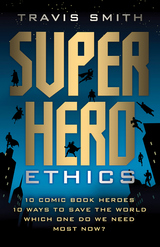 Superhero Ethics: 10 Comic Book Heroes; 10 Ways to Save the World; Which One Do We Need Most Now?
Travis Smith
Templeton Press, 2018 Whether in comic books or on movie screens, superhero stories are where many people first encounter questions about how they should conduct their lives. Although these outlandish figures—in their capes, masks, and tights, with their unbelievable origins and preternatural powers—are often dismissed as juvenile amusements, they really are profound metaphors for different approaches to shaping one’s character and facing the challenges of life. But, given the choice, which superhero should we follow today? Who is most worthy of our admiration? Whose goals are most noble? Whose ethics should we strive to emulate? To decide, Travis Smith takes ten top superheroes and pits them one against another, chapter by chapter. The hero who better exemplifies how we ought to live advances to the final round. By the end of the book, a single superhero emerges victorious and is crowned most exemplary for our times. How, then, shall we live? - How can we overcome our beastly nature and preserve our humanity? (The Hulk vs. Wolverine)
- How far can we rely on our willpower and imagination to improve the human condition? (Iron Man vs. Green Lantern)
- What limits must we observe when protecting our neighborhood from crime and corruption? (Batman vs. Spider-Man)
- Will the pursuit of an active life or a contemplative life bring us true fulfillment? (Captain America vs. Mr. Fantastic)
- Should we put our faith in proven tradition or in modern progress to achieve a harmonious society? (Thor vs. Superman)
Using superheroes to bring into focus these timeless themes of the human condition, Smith takes us on an adventure as fantastic as any you’ll find on a splash page or the silver screen—an intellectual adventure filled with surprising insights, unexpected twists and turns, and a daring climax you’ll be thinking about long after it’s over.
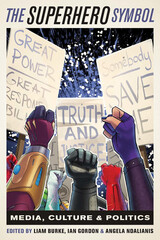 The Superhero Symbol: Media, Culture, and Politics
Liam Burke
Rutgers University Press, 2020 “As a man, I'm flesh and blood, I can be ignored, I can be destroyed; but as a symbol... as a symbol I can be incorruptible, I can be everlasting”. In the 2005 reboot of the Batman film franchise, Batman Begins, Bruce Wayne articulates how the figure of the superhero can serve as a transcendent icon.
It is hard to imagine a time when superheroes have been more pervasive in our culture. Today, superheroes are intellectual property jealously guarded by media conglomerates, icons co-opted by grassroots groups as a four-color rebuttal to social inequities, masks people wear to more confidently walk convention floors and city streets, and bulletproof banners that embody regional and national identities. From activism to cosplay, this collection unmasks the symbolic function of superheroes.
Bringing together superhero scholars from a range of disciplines, alongside key industry figures such as Harley Quinn co-creator Paul Dini, The Superhero Symbol provides fresh perspectives on how characters like Captain America, Iron Man, and Wonder Woman have engaged with media, culture, and politics, to become the “everlasting” symbols to which a young Bruce Wayne once aspired.
Superhero Thought Experiments: Comic Book Philosophy
Chris Gavaler and Nathaniel Goldberg
University of Iowa Press, 2019 Examining the deep philosophical topics addressed in superhero comics, authors Gavaler and Goldberg read plot lines for the complex thought experiments they contain and analyze their implications as if the comic authors were philosophers. Reading superhero comic books through a philosophical lens reveals how they experiment with complex issues of morality, metaphysics, meaning, and medium. Given comics’ ubiquity and influence directly on (especially young) readers—and indirectly on consumers of superhero movies and video games—understanding these deeper meanings is in many ways essential to understanding contemporary popular culture. The result is an entertaining and enlightening look at superhero dilemmas.
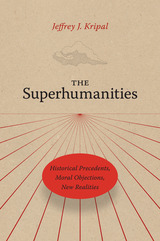 The Superhumanities: Historical Precedents, Moral Objections, New Realities
Jeffrey J. Kripal
University of Chicago Press, 2022 A bold challenge to rethink the humanities as intimately connected to the superhuman and to “decolonize reality itself.”
What would happen if we reimagined the humanities as the superhumanities? If we acknowledged and celebrated the undercurrent of the fantastic within our humanistic disciplines, entirely new cultural worlds and meanings would become possible. That is Jeffrey J. Kripal’s vision for the future—to revive the suppressed dimension of the superhumanities, which consists of rare but real altered states of knowledge that have driven the creative processes of many of our most revered authors, artists, and activists. In Kripal’s telling, the history of the humanities is filled with precognitive dreams, evolving superhumans, and doubled selves. The basic idea of the superhuman, for Kripal, is at the core of who and what the human species has tried to become over millennia and around the planet.
After diagnosing the basic malaise of the humanities—that the truth must be depressing—Kripal shows how it can all be done differently. He argues that we have to decolonize reality itself if we are going to take human diversity seriously. Toward this pluralist end, he engages psychoanalytic, Black critical, feminist, postcolonial, queer, and ecocritical theory. He works through objections to the superhumanities while also recognizing the new realities represented by the contemporary sciences. In doing so, he tries to move beyond naysaying practices of critique toward a future that can embrace those critiques within a more holistic view—a view that recognizes the human being as both a social-political animal as well as an evolved cosmic species that understands and experiences itself as something super.
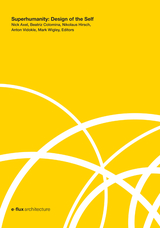 Superhumanity: Design of the Self
Nick Axel
University of Minnesota Press, 2018 A wide-ranging and challenging exploration of design and how it engages with the self
The field of design has radically expanded. As a practice, design is no longer limited to the world of material objects but rather extends from carefully crafted individual styles and online identities to the surrounding galaxies of personal devices, new materials, interfaces, networks, systems, infrastructures, data, chemicals, organisms, and genetic codes. Superhumanity seeks to explore and challenge our understanding of “design” by engaging with and departing from the concept of the “self.” This volume brings together more than fifty essays by leading scientists, artists, architects, designers, philosophers, historians, archaeologists, and anthropologists, originally disseminated online via e-flux Architecture between September 2016 and February 2017 on the invitation of the Third Istanbul Design Biennial. Probing the idea that we are and always have been continuously reshaped by the artifacts we shape, this book asks: Who designed the lives we live today? What are the forms of life we inhabit, and what new forms are currently being designed? Where are the sites, and what are the techniques, to design others? This vital and far-reaching collection of essays and images seeks to explore and reflect on the ways in which both the concept and practice of design are operative well beyond tangible objects, expanding into the depths of self and forms of life. Contributors: Zeynep Çelik Alexander, Lucia Allais, Shumon Basar, Ruha Benjamin, Franco “Bifo” Berardi, Daniel Birnbaum, Ina Blom, Benjamin H. Bratton, Giuliana Bruno, Tony Chakar, Mark Cousins, Simon Denny, Keller Easterling, Hu Fang, Rubén Gallo, Liam Gillick, Boris Groys, Rupali Gupte, Andrew Herscher, Tom Holert, Brooke Holmes, Francesca Hughes, Andrés Jaque, Lydia Kallipoliti, Thomas Keenan, Sylvia Lavin, Yongwoo Lee, Lesley Lokko, MAP Office, Chus Martínez, Ingo Niermann, Ahmet Ögüt, Trevor Paglen, Spyros Papapetros, Raqs Media Collective, Juliane Rebentisch, Sophia Roosth, Felicity D. Scott, Jack Self, Prasad Shetty, Hito Steyerl, Kali Stull, Pelin Tan, Alexander Tarakhovsky, Paulo Tavares, Stephan Trüby, Etienne Turpin, Sven-Olov Wallenstein, Eyal Weizman, Mabel O. Wilson, Brian Kuan Wood, Liam Young, and Arseny Zhilyaev.
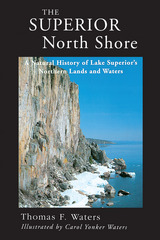 Superior North Shore: A Natural History of Lake Superior’s Northern Lands and Waters
Thomas F. Waters
University of Minnesota Press, 1999 Lake Superior has been known by many names through the centuries, from Kitchi Gami to le lac superieur, but the lake itself remains the same expansive and inspiring body of water. Here, Thomas F. Waters explores the natural and human history of the Superior basin.
From the trout and salmon swimming in its icy depths to the red and white pines towering overhead, Lake Superior has an ancient past. As Waters depicts the geology of the region, he traces the development of the rugged shoreline from Duluth to Thunder Bay to Sault Ste. Marie. The Superior North Shore also vividly describes the human history lived out in this sometimes harsh, always spectacular natural setting, from the earliest Native Americans to the voyageurs to the modern fishing industry.
Charmingly illustrated by Carol Yonker Waters, this volume conveys to the reader an intimacy with the legends of Lake Superior, as well as a sense of the grandeur behind this unique and vital ecological system.
"Waters's vivid prose transports you from the volcanic origins of the Superior Basin, to the Ojibwe Kitchi Gami (the "great lake"), to the wild, daunting days of exploration and exploitation of the area's natural resources, primarily fur and fish." Imprint
"Thomas F. Waters gives a detailed account of the region's land and waters, resources, and human settlement. His description of the series of frontiers--the fishermen's frontier, the mining frontier, the lumbering frontier, and the development of recreation--admirably combines human and natural history." Journal of Forest History
Thomas F. Waters is a professor emeritus of the University of Minnesota. He is also the author of Streams and Rivers of Minnesota (1998).
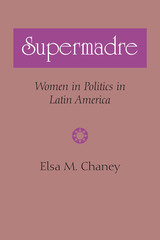 Supermadre: Women in Politics in Latin America
By Elsa M. Chaney
University of Texas Press, 1979 The title of this book, Supermadre, is ironic. It means, not that women have begun to exercise real power in Latin American political life, but that their participation is mostly confined to roles that are extensions of their roles as mothers—health, education, welfare, for example—and then only on the lower levels of policy-making. Elsa Chaney begins her study with an examination of various attempts to explain women's virtual absence from decision-making councils not only in Latin America but also world-wide, concluding that their motherhood role has had the profoundest effect on the nature of their political activities. She then analyzes the images and realities of women in Latin American society from colonial times to the present. The remainder of the book is a detailed study of women in politics and government in Latin America, with emphasis on the contrasting cases of Peru and Chile. In conclusion, Chaney suggests that women will make only slow progress toward full participation in public life until they themselves stop seeing their role in politics as that of the supermadre.
 Superman and Son
Schoenstein, Ralph
Rutgers University Press, 1995 "To Ralph Schoenstein, his father was the New York version of Superman: 'Not a mild-mannered reporter who put on a cape in a telephone booth, but a commanding editor who could use a telephone booth to get tickets to any sold-out Broadway show.' Father Paul was city editor of Hearst's New York Journal-American, the U.S.'s biggest evening paper through the '40s and '50s. . . . This affectionate memoir evokes a giant of great animal magnetism. . . a filial, funny book that Superman would have loved--and that anyone might admire."--Time Magazine "Enjoy a sneaking look back at the days when newspapering was a game as well as a trade, when the world paraded through a newspaper's door without security passes, when scoop-hungry city editors not only breathed fire, they inhaled, Schoenstein's gem of a memoir brings it all back in a rush of wit and longing."--Columbia Journalism Review "Father and son literature goes back to the Bible . . . but I doubt whether there has ever been anything quite like Schoenstein's memoir. Certainly nothing as funny, warm, and poignant all at once."--Los Angeles Times Publisher's Note: This book was previously titled Citizen Paul: The Story of Father and Son, published in 1978 and out of print for many years. It was an Alternate Selection of the Book of the Month Club.
 Superman: The Movie: The 40th-Anniversary Interviews
Gary Bettinson
Intellect Books, 2018 At a moment when superheroes dominate pop culture, Gary Bettinson takes us back to the first comic book blockbuster. Superman: The Movie – The 40th Anniversary Interviews takes us behind the scenes to reveal the personalities and expertise that went into making this landmark of Hollywood cinema.
Marking forty years since the film’s release, this book presents original interview transcripts with the cast and crew. It serves as a rare insider account of an acclaimed blockbuster that was steeped in controversy throughout production, from its record-breaking budget to conflicts between the director and producers. With refreshing candor, the interviewees cast light on the daily realities on set, as well as on the film’s release and reception. Beginning with the film’s inception and continuing through its runaway success, this book provides valuable insights into the practical logistics and day-to-day realities of mounting a big-budget production, at a time when high-concept Hollywood blockbusters were only just emerging as a genre.
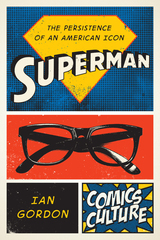 Superman: The Persistence of an American Icon
Gordon, Ian
Rutgers University Press, 2017 After debuting in 1938, Superman soon became an American icon. But why has he maintained his iconic status for nearly 80 years? And how can he still be an American icon when the country itself has undergone so much change?
Superman: Persistence of an American Icon examines the many iterations of the character in comic books, comic strips, radio series, movie serials, feature films, television shows, animation, toys, and collectibles over the past eight decades. Demonstrating how Superman’s iconic popularity cannot be attributed to any single creator or text, comics expert Ian Gordon embarks on a deeper consideration of cultural mythmaking as a collective and dynamic process. He also outlines the often contentious relationships between the various parties who have contributed to the Superman mythos, including corporate executives, comics writers, artists, nostalgic commentators, and collectors.
Armed with an encyclopedic knowledge of Superman’s appearances in comics and other media, Gordon also digs into comics archives to reveal the prominent role that fans have played in remembering, interpreting, and reimagining Superman’s iconography. Gordon considers how comics, film, and TV producers have taken advantage of fan engagement and nostalgia when selling Superman products. Investigating a character who is equally an icon of American culture, fan culture, and consumer culture, Superman thus offers a provocative analysis of mythmaking in the modern era.
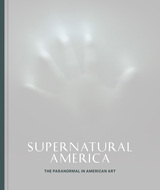 Supernatural America: The Paranormal in American Art
Edited by Robert Cozzolino
University of Chicago Press, 2021 America is haunted. Ghosts from its violent history—the genocide of Indigenous peoples, slavery, the threat of nuclear annihilation, and traumatic wars—are an inescapable and unsettled part of the nation’s heritage. Not merely in the realm of metaphor but present and tangible, urgently calling for contact, these otherworldly visitors have been central to our national identity. Through times of mourning and trauma, artists have been integral to visualizing ghosts, whether national or personal, and in doing so have embraced the uncanny and the inexplicable. This stunning catalog, accompanying the first major exhibition to assess the spectral in American art, explores the numerous ways American artists have made sense of their own experiences of the paranormal and the supernatural, developing a rich visual culture of the intangible.
Featuring artists from James McNeill Whistler and Kerry James Marshall to artist/mediums who made images with spirits during séances, this catalog covers more than two hundred years of the supernatural in American art. Here we find works that explore haunting, UFO sightings, and a broad range of experiential responses to other worldly contact.
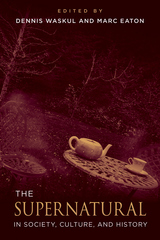 The Supernatural in Society, Culture, and History
Dennis Waskul and Marc Eaton
Temple University Press, 2018 In the twenty-first century, as in centuries past, stories of the supernatural thrill and terrify us. But despite their popularity, scholars often dismiss such beliefs in the uncanny as inconsequential, or even embarrassing. The editors and contributors to The Supernatural in Society, Culture, and History have made a concerted effort to understand encounters with ghosts and the supernatural that have remain present and flourished. Featuring folkloric researchers examining the cultural value of such beliefs and practices, sociologists who acknowledge the social and historical value of the supernatural, and enthusiasts of the mystical and uncanny, this volume includes a variety of experts and interested observers using first-hand ethnographic experiences and historical records. The Supernatural in Society, Culture, and History seeks to understand the socio-cultural and socio-historical contexts of the supernatural. This volume takes the supernatural as real because belief in it has fundamentally shaped human history. It continues to inform people’s interpretations, actions, and identities on a daily basis. The supernatural is an indelible part of our social world that deserves sincere scholarly attention. Contributors include: Janet Baldwin, I'Nasah Crockett, William Ryan Force, Rachael Ironside, Tea Krulos, Joseph Laycock, Stephen L. Muzzatti, Scott Scribner, Emma Smith, Jeannie Banks Thomas, and the editors
 Supernatural Japan: Izumi Kyoka and the Global Fantastic
Pedro Thiago Ramos Bassoe
University of Michigan Press, 2026 Supernatural Japan examines the role of Japanese writer Izumi Kyōka (1873–1939) in the formation of modern literature of the fantastic in Japan as a global literary genre. Kyōka wrote some of the most famous stories of ghosts, monsters, and the supernatural in modern Japanese literature, including The Holy Man of Mt. Kōya, The Grass Labyrinth, and The Castle Tower. Despite the clearly modernist elements and global influences of Kyōka’s fiction, his work has often been characterized as relying on traditional Japanese genres as inspiration for its themes and literary form.
Pedro Bassoe considers how Kyōka’s stories have been produced by a meeting of global influences—including Apuleius, The Arabian Nights, Hans Christian Andersen, the Brothers Grimm, Prosper Mérimée, Guy de Maupassant, Gerhart Hauptmann, and Jules Verne—combined with traditional Japanese genres. Bassoe develops the notion of “the scholarly fantastic” to describe how a set of realistic epistemologies reinforce the fantastic in Kyōka’s writings. Supernatural Japan offers an up-to-date introduction to Izumi Kyōka and his writing for students, scholars, or fans of Japanese fantasy literature and media.
Supernatural Speakers in Old English Verse: Poetic and Spiritual Power in Early Medieval Society
Matthew D. Coker
Arc Humanities Press, 2023 The first extended study of supernatural discourse in Old English poetry, Supernatural Speakers in Old English Verse fills a conspicuous gap in the scholarship of early medieval literature. Drawing insights from various disciplines, including critical discourse analysis, social psychology, and oral poetry studies, Supernatural Speakers demonstrates how and why three poets—the poets of Genesis A, Christ C, and Guthlac A—marshalled their distinction as experts of the Old English poetic medium to perform the power of supernatural speech by means of masterful poetics. By offering new analytical paths through these early medieval poems, Supernatural Speakers elucidates the importance of poetics as a critical window on the social and religious functions of verbal art in early medieval England.
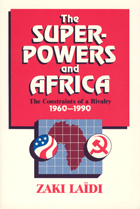 The Superpowers and Africa: The Constraints of a Rivalry, 1960-1990
Zaki Laidi
University of Chicago Press, 1990 That Africa—one of the superpowers' crucial diplomatic and economic battlegrounds—now verges on political developments as dramatic as those of eastern Europe compels us to consider the tremendous influence that East and West have wielded in recent African political development. Drawing from American diplomatic archives, firsthand interviews, and the African and international press, Zaki Laidï presents a historical analysis of how the dialectical relationships of the United States, Soviet Union, and African actors evolved to their present state.
The lapse of European influence in the 1960s left a diplomatic void, which the superpowers rushed to fill. Just as Dien Bien Phû and the Suez crisis thrust Asia and the Near East, respectively, into the diplomatic spotlight, so the Angolan crisis lent a multifaceted cast to Africa's international relations. The ebb and flow of African crises is now linked to the rhythm of superpower relations, but Laidï is quick to warn that Africa's internal political circumstances shape the boundaries for external influence and constrain any efforts of the superpowers to exert total control.
Laidï's provocative study, here in its first English translation, addresses diplomatic strategy, often neglected economic considerations, the growing influence of the Bretton Woods institutions, and the decline of French influence in Africa.
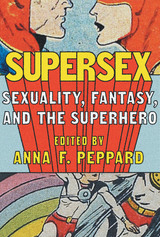 Supersex: Sexuality, Fantasy, and the Superhero
Edited by Anna F. Peppard
University of Texas Press, 2020 2021 Comic Studies Society Prize for Edited Collection
From Superman and Batman to the X-Men and Young Avengers, Supersex interrogates the relationship between heroism and sexuality, shedding new light on our fantasies of both.
From Superman, created in 1938, to the transmedia DC and Marvel universes of today, superheroes have always been sexy. And their sexiness has always been controversial, inspiring censorship and moral panic. Yet though it has inspired jokes and innuendos, accusations of moral depravity, and sporadic academic discourse, the topic of superhero sexuality is like superhero sexuality itself—seemingly obvious yet conspicuously absent. Supersex: Sexuality, Fantasy, and the Superhero is the first scholarly book specifically devoted to unpacking the superhero genre’s complicated relationship with sexuality. Exploring sexual themes and imagery within mainstream comic books, television shows, and films as well as independent and explicitly pornographic productions catering to various orientations and kinks, Supersex offers a fresh—and lascivious—perspective on the superhero genre’s historical and contemporary popularity. Across fourteen essays touching on Superman, Batman, the X-Men, and many others, Anna F. Peppard and her contributors present superhero sexuality as both dangerously exciting and excitingly dangerous, encapsulating the superhero genre’s worst impulses and its most productively rebellious ones. Supersex argues that sex is at the heart of our fascination with superheroes, even—and sometimes especially—when the capes and tights stay on.
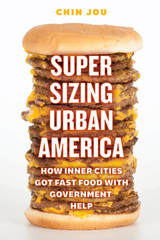 Supersizing Urban America: How Inner Cities Got Fast Food with Government Help
Chin Jou
University of Chicago Press, 2017 More than one-third of adults in the United States are obese. The Centers for Disease Control and Prevention estimates that there are over 112,000 obesity-related deaths annually, and for many years, the government has waged a very public war on the problem. Former Surgeon General Richard Carmona warned in 2006 that “obesity is the terror within,” going so far as to call it a threat that will “dwarf 9/11.”
What doesn’t get mentioned in all this? The fact that the federal government helped create the obesity crisis in the first place—especially where it is strikingly acute, among urban African-American communities. Supersizing Urban America reveals the little-known story of how the U.S. government got into the business of encouraging fast food in inner cities, with unforeseen consequences we are only beginning to understand. Chin Jou begins her story in the late 1960s, when predominantly African-American neighborhoods went from having no fast food chain restaurants to being littered with them. She uncovers the federal policies that have helped to subsidize that expansion, including loan guarantees to fast food franchisees, programs intended to promote minority entrepreneurship, and urban revitalization initiatives. During this time, fast food companies also began to relentlessly market to urban African-American consumers. An unintended consequence of these developments was that low-income minority communities were disproportionately affected by the obesity epidemic.
In the first book about the U.S. government’s problematic role in promoting fast food in inner-city America, Jou tells a riveting story of the food industry, obesity, and race relations in America that is essential to understanding health and obesity in contemporary urban America.
 Superstitions: Omens, Charms, Cures 1787
Francis Grose
Bodleian Library Publishing, 2011 Superstitions are surprisingly enduring. From dodging black cats to crossing one’s fingers while making a wish to an aversion to staff meetings on Friday the thirteenth, it is remarkable how many superstitions remain intact—even in this age of rationalism and swift scientific advancement. First published in 1787 as part of the disparate collection A Provincial Glossary, with a Collection of Local Proverbs, and Popular Superstitions, Francis Grose’s Superstitions represents years of careful data collection and fieldwork and presents a full catalog of ways the supernatural might be expected to interfere in one’s life. Organized thematically into chapters like “Witches, Sorcerers, and Witchcraft,” “Things Lucky and Unlucky,” “Second Sight,” “Omens,” and “Superstitious Methods of Obtaining a Knowledge of Future Events,” Superstitions offers a systematic overview of the superstitious beliefs of the day as well as those held by earlier generations. Here, Grose’s work is reproduced under its original headings and supplemented by an informative introduction by Oxford English Dictionary editor John Simpson, setting the superstitions in proper historical and cultural context. The resulting collection is a delightfully quirky guide to traditional sayings and beliefs, many archaic but some still surprisingly common today.
 Superstitious Regimes: Religion and the Politics of Chinese Modernity
Rebecca Nedostup
Harvard University Press, 2009 We live in a world shaped by secularism—the separation of numinous power from political authority and religion from the political, social, and economic realms of public life. Not only has progress toward modernity often been equated with secularization, but when religion is admitted into modernity, it has been distinguished from superstition. That such ideas are continually contested does not undercut their extraordinary influence.
These divisions underpin this investigation of the role of religion in the construction of modernity and political power during the Nanjing Decade (1927–1937) of Nationalist rule in China. This book explores the modern recategorization of religious practices and people and examines how state power affected the religious lives and physical order of local communities. It also looks at how politicians conceived of their own ritual role in an era when authority was meant to derive from popular sovereignty. The claims of secular nationalism and mobilizational politics prompted the Nationalists to conceive of the world of religious association as a dangerous realm of “superstition” that would destroy the nation. This is the first “superstitious regime” of the book’s title. It also convinced them that national feeling and faith in the party-state would replace those ties—the second “superstitious regime.”
 Superstorm Sandy: The Inevitable Destruction and Reconstruction of the Jersey Shore
Bates, Diane C
Rutgers University Press, 2015 Sandy was the costliest hurricane in U.S. history after Katrina, but the waters had barely receded from the Jersey coast when massive efforts began to “Restore the Shore.” Why do people build in areas open to repeated natural disasters? And why do they return to these areas in the wake of major devastation? Drawing on a variety of insights from environmental sociology, Superstorm Sandy answers these questions as it looks at both the unique character of the Jersey Shore and the more universal ways that humans relate to their environment.
Diane C. Bates offers a wide-ranging look at the Jersey Shore both before and after Sandy, examining the many factors—such as cultural attachment, tourism revenues, and governmental regulation—that combined to create a highly vulnerable coastal region. She explains why the Shore is so important to New Jerseyans, acting as a key cultural touchstone in a state that lacks a central city or even a sports team to build a shared identity among the state’s residents. She analyzes post-Sandy narratives about the Jersey Shore that trumpeted the dominance of human ingenuity over nature (such as the state’s “Stronger than the Storm” advertising campaign) or proclaimed a therapeutic community (“Jersey Strong”)—narratives rooted in emotion and iconography, waylaying any thought of the near-certainty of future storms. The book also examines local business owners, politicians, real estate developers, and residents who have vested interests in the region, explaining why the Shore was developed intensively prior to Sandy, and why restoration became an imperative in the post-storm period.
Engagingly written and insightful, Superstorm Sandy highlights the elements that compounded the disaster on the Shore, providing a framework for understanding such catastrophes and preventing them in the future.
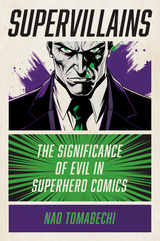 Supervillains: The Significance of Evil in Superhero Comics
Nao Tomabechi
Rutgers University Press, 2025 Alongside superheroes, supervillains, too, have become one of today’s most popular and globally recognizable figures. However, it is not merely their popularity that marks their significance. Supervillains are also central to superhero storytelling to the extent that the superhero genre cannot survive without supervillains.
Bringing together different approaches and critical perspectives across disciplines, author Nao Tomabechi troubles overly hero-centered works in comics studies to reconsider the modern American myths of the superheroes. Considering the likes of Lex Luthor, the Joker, Catwoman, Harley Quinn, Loki, Venom, and more, Supervillians explores themes such as gender and sexuality, disability, and many forms of Otherness in relation to the notion of evil as it appears in the superhero genre. The book investigates how supervillains uphold and, at times, trouble dominant ideals expressed by the heroism of our superheroes.
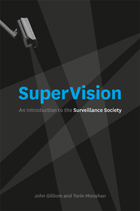 SuperVision: An Introduction to the Surveillance Society
John Gilliom and Torin Monahan
University of Chicago Press, 2012 We live in a surveillance society. Anyone who uses a credit card, cell phone, or even search engines to navigate the Web is being monitored and assessed—and often in ways that are imperceptible to us. The first general introduction to the growing field of surveillance studies, SuperVision uses examples drawn from everyday technologies to show how surveillance is used, who is using it, and how it affects our world. Beginning with a look at the activities and technologies that connect most people to the surveillance matrix, from identification cards to GPS devices in our cars to Facebook, John Gilliom and Torin Monahan invite readers to critically explore surveillance as it relates to issues of law, power, freedom, and inequality. Even if you avoid using credit cards and stay off Facebook, they show, going to work or school inevitably embeds you in surveillance relationships. Finally, they discuss the more obvious forms of surveillance, including the security systems used at airports and on city streets, which both epitomize contemporary surveillance and make impossibly grand promises of safety and security. Gilliom and Monahan are among the foremost experts on surveillance and society, and, with SuperVision, they offer an immensely accessible and engaging guide, giving readers the tools to understand and to question how deeply surveillance has been woven into the fabric of our everyday lives.
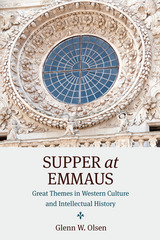 Supper at Emmaus
Glenn W. Olsen
Catholic University of America Press, 2016 Supper at Emmaus traces various important intellectual topics from the ancient world to the modern period. Generally, as in its treatment of the question of whether the long-standing contrast between cyclical and linear views of history is helpful, it introduces important thinkers who have considered the question. A preoccupation of the book is the appearance and reappearance across the centuries of patterns used to organize temporal and cultural experience. After an opening essay on transcendental truth and cultural relativism, the second chapter traces a distinction, common in historical writings during the past two centuries, between an alleged ancient classical "cyclic" view of time and history, used to describe the claimed repetitiveness of and similarities between historical events ("nothing is new under the sun"), and a contrasting Jewish-Christian linear view, sometimes described as providential in that it moves through a series of unique events to some end intended by God. In the latter, history is "about something," the education of the human race or the redemption of humankind. As in each of the remaining essays, the book then attempts to draw out the limitations of what the current consensus on this topic has become. It does this for such things as our current understanding of religious toleration, humanism, natural law, and teleology. Some of the essays, such as those on debate about Augustine's understanding of marriage or the concluding illustrated essay on the baroque city of Lecce, are published for the first time. Others are based on previously published contributions to the scholarly literature, though generally each of these chapters concludes with a postscript that engages with current scholarly debate on the subject.
 Supplanting America's Railroads: The Early Auto Age, 1900–1940
John A. Jakle
University of Tennessee Press, 2017 With their speed and geographical reach, America’s railroads reigned supreme through much of the nineteenth century, knitting together the sprawling country as no other mode of transportation was able to do. Around 1900, however, an upstart challenger—the automobile— arrived on the scene. At first regarded as little more than a plaything for the wealthy, the new invention rapidly gained popularity, especially after Henry Ford’s innovative mass-production techniques made cars affordable to the middling classes.
In this engaging book, John A. Jakle and Keith A. Sculle—renowned experts on the wide-ranging effects of automobility on American life—examine the various ways in which the railroads responded to their new competition, not just from the automobile itself but from its close cousins, the motor truck and motor bus, through several decades up to the eve of World War II. Drawing on extensive research in the trade publications of the period, the authors examine the development of interurban and intraurban rail transport, the transition from steam to electric and diesel power, and the railroads’ close involvement in the nascent trucking and passenger-bus industries. They devote a chapter to the places where trains and automobiles came most directly and dangerously into conflict—railroad crossings—and pay special attention throughout to the key role of government in the competition, whether through antitrust legislation, taxation, or the building of the “good roads” that were so necessary to the rise of auto, truck, and bus transport.
Although the railroads remain with us, it was the automobile that emerged as the predominant transportation form, owing to its promise of speed, convenience, flexibility of movement, and, most important, self-gratification. In a country that places such high value on individual freedom, the romance of motoring has proven irresistible.
JOHN A. JAKLE, emeritus professor of geography at the University of Illinois, Urbana-Champaign, and KEITH A. SCULLE, the former head of research and education at the Illinois Historic Preservation Agency, have collaborated on eight previous books on the history of “Roadside America,” the most recent of which is The Garage: Automobility and Building Innovation in America’s Early Auto Age.
 Supplement to Bibliography of the Works of Rudyard Kipling (1927)
Flora Virginia Livingston
Harvard University Press This volume is a continuation of Mrs. Livingston’s authoritative Kipling bibliography published in 1927. It includes the works of Kipling published since 1926, the numbering being consecutive with the early volume; corrections and additions to the earlier volume; a list of over one hundred and thirty pirated pamphlets issued in London between 1924 and 1937; a list of translations in thirty different languages; a list of portraits, paintings, and photographs, and portraits and caricatures in magazines and newspapers; a list of entire books about Kipling, and some of the more important books containing chapters or portions of chapters about him. Kipling collectors will be especially grateful for the list of pirated pamphlets issued in London between 1924 and 1937. When these first appeared in the auction room, they were catalogued as having been printed in India at the time the material appeared in the Indian newspapers, and some of them were sold in New York at exorbitant prices. As for the articles in newspapers and magazines, there are so many that they would fill many volumes; Mrs. Livingston has therefore listed only the outstanding ones that are remarkable for their critical acumen or as real contributions to biography and bibliography. To collectors, librarians, dealers, and students of English literature, the volume will be as essential as the earlier one, which was received with much approval.
Supplement to Introduction to Classical and New Testament Greek
Michael Boler
Catholic University of America Press, 2024 More than a simple answer key, this supplemental guide is designed to guide both instructors and those using this book for self-study. Understanding Greek is to understand that there is never a single “correct translation.” Multiple translations are given for each sentence along with commentary on the pros and cons of each translation. By introducing the reader to different philosophies of translation, this volume gives the “why" behind different translations and encourages the reader to think of translation as a way to better understand the intricacies of the original language. This supplementary volume contains an introduction, multiple translations and commentary on the sentences in the 40 chapters, as well as answers to the supplementary exercises.
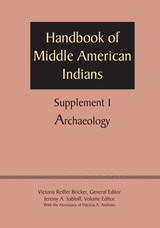 Supplement to the Handbook of Middle American Indians, Volume 1: Archaeology
Victoria Reifler Bricker, general editor; Jeremy A. Sabloff, volume editor
University of Texas Press, 1982 The sixteen-volume Handbook of Middle American Indians, completed in 1976, has been acclaimed the world over as the most valuable resource ever produced for those involved in the study of Mesoamerica. When it was determined in 1978 that the Handbook should be updated periodically, Victoria Reifler Bricker, well-known cultural anthropologist, was selected to be series editor. This first volume of the Supplement is devoted to the dramatic changes that have taken place in the field of archaeology. The volume editor, Jeremy A. Sabloff, has gathered together detailed reports from the directors of many of the most significant archaeological projects of the mid-twentieth century in Mesoamerica, along with discussions of three topics of general interest (the rise of sedentary life, the evolution of complex culture, and the rise of cities).
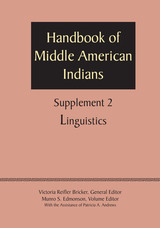 Supplement to the Handbook of Middle American Indians, Volume 2: Linguistics
Victoria Reifler Bricker, general editor
University of Texas Press, 1984 The sixteen-volume Handbook of Middle American Indians, completed in 1976, has been acclaimed the world over as the single most valuable resource ever produced for those involved in the study of Mesoamerica. When it was determined in 1978 that the Handbook should be updated periodically, well-known cultural anthropologist Victoria Reifler Bricker was selected to be general editor. This second volume of the Supplement is devoted to Mesoamerican languages. It differs in both scope and content from its forerunner, Volume 5 of the Handbook of Middle American Indians: Linguistics, which presents a general survey of Middle American linguistics and descriptions of Classical Nahuatl, Yucatec, Quiche, Popoluca, Zapotec, Mazatec, Pame, and Chontal de Oaxaca. The aim of the present volume is to provide detailed sketches of five additional languages: Mixe, Chichimeco Jonaz, Choltí, Tarascan, and Huastec. All the grammatical sketches deal with the phonology, morphology, and syntax of the languages treated; most cover discourse as well. Taken together, these new essays represent a substantial enrichment of the earlier Handbook volume on linguistics. Alone, the Supplement stands as an invaluable reference guide for all who are interested in learning about these important and heretofore poorly treated languages of Middle America.
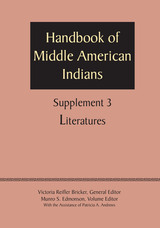 Supplement to the Handbook of Middle American Indians, Volume 3: Literatures
Victoria R. Bricker, general editor
Munro S. Edmonson, volume editor
University of Texas Press, 1985 The sixteen-volume Handbook of Middle American Indians, completed in 1976, has been acclaimed the world over as the single most valuable resource ever produced for those involved in the study of Mesoamerica. When it was determined in 1978 that the Handbook should be updated periodically, Victoria Reifler Bricker, well-known cultural anthropologist, was elected to be general editor. This third volume of the Supplement is devoted to the aboriginal literatures of Mesoamerica, a topic receiving little attention in the original Handbook. According to the general editor, "This volume does more than supplement and update the coverage of Middle American Indian literatures in the Handbook. It breaks new ground by defining the parameters of a new interdisciplinary field in Middle American Indian studies." The aim of the present volume is to consider literature from five Middle American Indian languages: Nahuatl, Yucatecan Maya, Quiche, Tzotzil, and Chorti. The first three literatures are well documented for both the Classical and Modern variants of their languages and are obvious candidates for inclusion in this volume. The literatures of Tzotzil and Chorti, on the other hand, are oral, and heretofore little has been written of their genres and styles. Taken together, these essays represent a substantial contribution to the Handbook series, with the volume editor's introduction placing in geographic perspective the five literatures chosen as representative of the Middle American literary tradition.
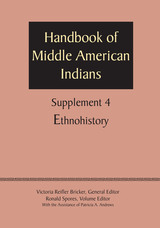 Supplement to the Handbook of Middle American Indians, Volume 4: Ethnohistory
Victoria R. Bricker, general editor
Ronald Spores, volume editor
University of Texas Press, 1986 The sixteen-volume Handbook of Middle American Indians, completed in 1976, has been acclaimed the world over as the single most valuable resource ever produced for those involved in the study of Mesoamerica. When it was determined in 1978 that the Handbook should be updated periodically, Victoria Reifler Bricker, well-known cultural anthropologist, was elected to be general editor. This fourth volume of the Supplement is devoted to colonial ethnohistory. Four of the eleven chapters review research and ethnohistorical resources for Guatemala, South Yucatan, North Yucatan, and Oaxaca, areas that received less attention than the central Mexican area in the original Guide to Ethnohistorical Sources (HMAI vols. 12-15). Six substantive and problem-oriented studies cover the use of colonial texts in the study of pre-colonial Mayan languages; political and economic organization in the valleys of Mexico, Puebla-Tlaxcala, and Morelos; urban-rural relations in the Basin of Mexico; kinship and social organization in colonial Tenochtitlan; tlamemes and transport in colonial central Mexico; and land tenure and titles in central Mexico as reflected in colonial codices.
Supplement to the Handbook of Middle American Indians, Volume 5: Epigraphy
Edited by Victoria Reifler Bricker
University of Texas Press, 1991 In 1981, under the editorship of Victoria Bricker, UT Press began to issue supplemental volumes to the classic sixteen-volume work Handbook of Middle American Indians. These supplements are intended to update scholarship in various areas and to cover topics of current interest that may not have been included in the original Handbook. This volume is designed to recognize the important role that epigraphy has come to play in Middle American scholarship and to document significant achievements in three areas: dynastic history, phonetic decipherment, and calendrics. The book covers four of the major pre-Columbian scripts in the region (Zapotec, Mixtec, Aztec, and Maya) and one that is relatively unknown (Tlapanec).
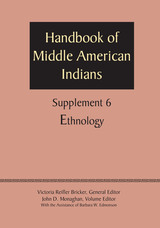 Supplement to the Handbook of Middle American Indians, Volume 6: Ethnology
Victoria Reifler Bricker, general editor; John D. Monaghan, volume editor, with the assistance of Barbara W. Edmonson
University of Texas Press, 2000 In 1981, UT Press began to issue supplemental volumes to the classic sixteen-volume work, Handbook of Middle American Indians. These supplements are intended to update scholarship in various areas and to cover topics of current interest. Supplements devoted to Archaeology, Linguistics, Literatures, Ethnohistory, and Epigraphy have appeared to date. In this Ethnology supplement, anthropologists who have carried out long-term fieldwork among indigenous people review the ethnographic literature in the various regions of Middle America and discuss the theoretical and methodological orientations that have framed the work of areal scholars over the last several decades. They examine how research agendas have developed in relationship to broader interests in the field and the ways in which the anthropology of the region has responded to the sociopolitical and economic policies of Mexico and Guatemala. Most importantly, they focus on the changing conditions of life of the indigenous peoples of Mesoamerica. This volume thus offers a comprehensive picture of both the indigenous populations and developments in the anthropology of the region over the last thirty years.
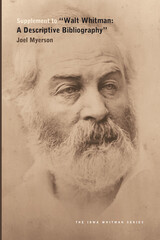 Supplement to “Walt Whitman: A Descriptive Bibliography”
Joel Myerson
University of Iowa Press, 2011 Focusing on actual publications by Whitman rather than those about him, Joel Myerson’s painstakingly compiled supplement to his 1993 Walt Whitman: A Descriptive Bibliography (Oak Knoll, ISBN 0-82293-739-5) includes almost twenty years of newly discovered and updated materials that will be invaluable to Whitman scholars. The entries describe in detail the various forms of Whitman’s books, newspaper articles, broadsheets, reprints, translations, and so on. Myerson includes facsimiles of title pages as well as information on pagination, illustrations, dimensions, contents, publication history, typography, paper, binding, and dust jackets. The sections incorporate the following: all books and pamphlets written wholly by Whitman through 1892, the year of his death, and all editions and reprintings in English through 2009; all collected editions of Whitman’s writings through 2009; all miscellaneous collections of his writings through 2009; all books in which material by Whitman appears for the first time; all first American and English publications in newspapers and magazines of material by Whitman through 2009; all proof copies as well as circulars and broadsides of his poetry and prose published during his lifetime; prose and poetry by Whitman reprinted in books and pamphlets through 1892; separate publications of individual poems and prose works through 2009; and references to possible publications by Whitman that are not dealt with elsewhere in the bibliography. The volume is thoroughly indexed. Based on evidence gathered from personal inspection of multiple copies of Whitman’s works in American, Canadian, British, and New Zealand libraries, Myerson’s Supplement exemplifies the highest standards of bibliographic research.
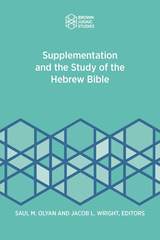 Supplementation and the Study of the Hebrew Bible
Saul M. Olyan
SBL Press, 2018 Explore the role supplementation played in the development of the Hebrew Bible
This new volume includes ten original essays that demonstrate clearly how common, varied, and significant the phenomenon of supplementation in the Hebrew Bible is. Contributors examine instances of supplementation ranging from minor additions to aid pronunciation, to fill in abbreviations, or to clarify ambiguous syntax to far more elaborate changes, such as interpolations within a work of prose, in a prophetic text, or in a legal text. Scholars also examine supplementation by the addition of an introduction, a conclusion, or an introductory and concluding framework to a particular lyrical, legal, prophetic, or narrative text.
Features:
A contribution to the further development of a panbiblical compositional perspective
Examples from Psalms, the pentateuchal narratives, the Deuteronomistic History, the Latter Prophets, and legal texts
 Suppliant Maidens. Persians. Prometheus. Seven Against Thebes
Aeschylus
Harvard University Press Aeschylus (ca. 525456 BCE), author of the first tragedies existing in European literature, was an Athenian born at Eleusis. He served at Marathon against Darius in 490, and again during Xerxes' invasion, 480479. Between 478 and 467 he visited Sicily, there composing by request Women of Aetna. At Athens he competed in production of plays more than twenty times, and was rewarded on at least thirteen occasions, becoming dominant between 500 and 458 through the splendour of his language and his dramatic conceptions and technique.
Of his total of 8090 plays seven survive complete. The Persians (472), the only surviving Greek historical drama, presents the failure of Xerxes to conquer Greece. Seven against Thebes (467) was the second play of its trilogy of related plays on the evil fate of the Theban House. Polyneices tries to regain Thebes from his brother Eteocles; both are killed. In Suppliant Maidens, the first in a trilogy, the daughters of Danaus arrive with him at Argos, whose King and people save them from the wooing of the sons of their uncle Aegyptus. In Prometheus Bound, first or second play of its trilogy about Prometheus, he is nailed to a crag, by order of Zeus, for stealing fire from heaven for men. Defiant after visitors' sympathy and despite advice, he descends in lightning and thunder to Hell. The Oresteia (458), on the House of Atreus, is the only Greek trilogy surviving complete. In Agamemnon, the King returns from Troy, and is murdered by his wife Clytaemnestra. In Libation-Bearers, Orestes with his sister avenges their father Agamemnon's death by counter-murder. In Eumenides, Orestes, harassed by avenging Furies, is arraigned by them at Athens for matricide. Tried by a court set up by Athena, he is absolved, but the Furies are pacified.
We publish in Volume I four plays; and in Volume II the Oresteia and some fragments of lost plays.
Suppliant Women. Electra. Heracles
Euripides
Harvard University Press, 1998 Three plays by ancient Greece’s third great tragedian.
One of antiquity's greatest poets, Euripides has been prized in every age for the pathos, terror, and intellectual probing of his dramatic creations. The new Loeb Classical Library edition of his plays is in six volumes.
Volume III contains three plays. Suppliant Women reflects on the rule of law; Electra gives Euripides' version of the legend of Clytaemestra's murder by her children; Heracles testifies to the fragility of human happiness.
Supplice
T. Zachary Colter
University Press of Colorado, 2014 Published by the Center for Literary Publishing at Colorado State University
Winner of the 2014 Colorado Prize for Poetry, Supplice is the second installment in T. Zachary Cotler’s sonnet sequence that began with Sonnets to the Humans.These are amatory sonnets, but with love and rhyme tortured into broken and boneset textures. Supplice herself, the dark lady of these poems, is difficult to pin down with an epithet. Is she the angel of reality, banality, popular culture, pornography, uncertainty, or economic and environmental crisis? She has something to do with the history of cruelty and pain, with the devaluation of traditional ideas of beauty, and with the silence and science that have replaced divinity.
Supply Chain
Pimone Triplett
University of Iowa Press, 2017 With their extravagant musicality, Triplett’s poems explore the thinning lines between responsibility and complicity, the tangled “supply chain” that unnervingly connects the domestic to the political, personal memory to social practice, and age-old familial discords to our new place in the anthropocentric world. Equal parts celebration and lament for the mechanisms we shape and are shaped by, these poetic acts reveal the poet as an entangled mediator among registers of public and private, intimate and historical, voicings. Here we traffic in the blessings and burdens of the human will to shape a world. What’s more, as we follow these linked enchainings of the deeply en-worlded citizen, we reawaken to the central paradox of our time, the need to refuse easy answers, to stay open, trilling, between these necessary notes of critique and of compassion.
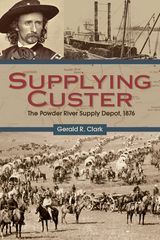 Supplying Custer: The Powder River Supply Depot, 1876
Gerald R. Clark
University of Utah Press, 2014 The Battle of the Little Bighorn is one of the best-known events in the history of the American West. Questions surrounding Custer’s fate have been discussed and researched at length, but details about the transportation and logistics of military supplies have not been thoroughly investigated. Archaeologist Gerald Clark stumbled upon the remnants of a supply depot while surveying the area near the confluence of the Yellowstone and Powder Rivers. It turned out to have been established by General Terry during the Sioux War and utilized by Custer and part of the 7th Calvary.
The book details the items recovered archaeologically, including ale and soda bottles, cartridges, packing crates, and a horseshoe and ceramic doll. It also addresses the army’s knowledge of this area and how the supply depot fit into the broader military campaign. This book connects archaeology and history to explore how the American military planned, maneuvered, and operated on the northern plains from the end of the Civil War through 1876.
 Supply-Side Revolution: An Insider’s Account of Policymaking in Washington
Paul Craig Roberts
Harvard University Press, 1984 Supply-side economics, emphasizing tax cuts over government spending, has been much maligned and little understood. It first leaped to national attention during the budget policy debates of 1977–78, when the new ideas captured the imagination of Congress and challenged conventional Keynesian models. After Ronald Reagan was elected, the fight was on in 1981 for what was called “the largest tax cut in history.” A year later, the same administration presided over the “largest tax increase in history.” Nine months after that, President Reagan reemerged as a supply-side leader.
This book tells what happened, and how. It is the story of a revolution in economic theory from its origin in Congressman Jack Kemp's office in the summer of 1975 through the first thirty months of the Reagan Administration. It details the struggles of key figures such as Donald Regan, James Baker, David Stockman, and Alice Rivlin.
It is also the first presentation by a professional economist of the hard case for supply-side economics. Paul Craig Roberts played a major role in managing the issue of supply-side economics both in the congressional staff and the executive branch. He has written an astonishingly candid study of the policy process—how individual ego tends to prevail over common cause, how power plays by politicians are more likely to determine policy than is the ideology of an administration, how skill at manipulating the media prevails over solid economic data. It is a stunning analysis, and a sobering one, from an expert supply-sider who continues to believe that history is on his side, and that supply-side thinking must prevail in a healthy, democratic society.
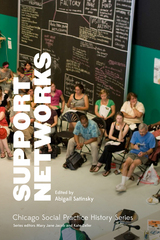 Support Networks
Edited by Abigail Satinsky
School of the Art Institute of Chicago, 2014 When artists break boundaries of traditional forms and work outside of institutionalized systems, they often must create new infrastructures to sustain their practices. Support Networks looks to Chicago’s deeply layered history of artists, scholars, and creative practitioners coming together to create, share, and maintain these alternative networks of exchange and collaboration.
The contributors to this collection explore how the city continues to inform and shape contemporary cultural work and the development of informal organizations. Many of the authors are contributors to the scene themselves, having envisioned, founded, and activated these new ways of working. The unconventional systems explored in Support Networks call attention to stories and experiences often overlooked in this history. Ranging from artists’ reflections to essays, interviews, and ephemera, these perspectives challenge existing narratives and foreground underrepresented voices. Through more than twenty-five diverse examples of community building, activism, and catalytic projects, readers will find the inspiration they need to build their own counter-institutions.
Support Networks is part of the new Chicago Social Practice History series, edited by Mary Jane Jacob and Kate Zeller in the Department of Exhibitions and Exhibition Studies at the School of the Art Institute of Chicago (SAIC).
 Supporting Diversity through Collection Evaluation, Development, and Weeding
Erika Barber
Association of College & Research Libraries, 2024 The College Library Information on Policy and Practice (CLIPP) book series from ACRL provides college and small university libraries analysis and examples of library practices and procedures.
Supporting Diversity through Collection Evaluation, Development, and Weeding: CLIPP #48
contains a thorough literature review and bibliography, analysis and discussion of survey results, and sample library collection development policies; diversity, equity, and justice statements; and a harmful content policy.
There are emerging practices for evaluating collection diversity and for diversifying collections via acquisitions, but the question of how collection diversity factors into weeding—either in theory or in practice—has not been thoroughly explored. CLIPP #48 provides a comprehensive survey of how diversity-enhancing collection management practices have filtered into the day-to-day work of average small and medium-sized academic libraries, and offers models for library workers who want to incorporate diversity concerns and policies into collection management practices.
 Supporting Neurodiverse Students in Academic Libraries
Amanda Boyer
Association of College & Research Libraries, 2025 Neurodiverse students encounter myriad barriers and hurdles to thriving in academia, and there is an increasing need for all types of accessibility in our libraries. Librarians and educators working in academic institutions can partner with neurodiverse students to help them flourish on campus and establish community. In five parts, Supporting Neurodiverse Students in Academic Libraries offers practical advice that can be easily implemented and scaled to various types, sizes, and budgets of libraries. - Instruction
- Services
- Cross-Campus Collaborations
- Resources
- Spaces
Chapters include effective practices for students with autism spectrum disorder, brain trauma, and PTSD, but also depression, anxiety, and other mental health disorders. Supporting Neurodiverse Students in Academic Libraries demonstrates the power of working alongside students to create welcoming spaces, services, and resources that can help all students succeed.
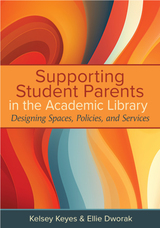 Supporting Student Parents in the Academic Library: Designing Spaces, Policies, and Services
Kelsey Keyes
Association of College & Research Libraries, 2024 Student parents are a socioeconomically, racially, and financially diverse group. What they have in common is the drive to work hard to overcome steep barriers in obtaining a college education. Supporting Student Parents in the Academic Library: Designing Spaces, Policies, and Services is part toolkit, part treatise, and part call to action. In four parts: - The Higher Education Landscape
- The Role of Academic Libraries
- Looking Outward to Community, For-Profit, and International Organizations
- Evaluating Needs and Measuring Success
It includes templates, sample policy language, budgets, survey instruments, and other immediately useful tools and examples. There are field notes from academic librarians from institutions of varying sizes and resources demonstrating different ways of supporting these students, and the voices of students themselves. Student parents can feel unwelcome and invisible in their institutions. And for every student parent who is struggling to complete an education despite these hurdles, there are many others who have not been able to find a way. Supporting Student Parents is a guide to engaging with and aiding the student parents in your libraries and leading the charge in making your institutions more family friendly.
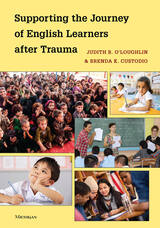 Supporting the Journey of English Learners after Trauma
Judith B. O'Loughlin and Brenda K. Custodio
University of Michigan Press, 2021 One of the hottest topics in education today is trauma-informed pedagogy. Much of what has been written in this area comes from counselors, therapists, and other experts in this field, but there is very little written specifically about the effects of trauma on English learners. This book has been written to address this need. The authors have sifted through the literature on trauma and social-emotional learning (SEL) to provide the material that applies directly to English learners. This book was written mainly for teachers of students with immigrant backgrounds and for the building administrators who support them, including counselors, paraprofessionals, and social workers.
This book is designed to provide a practical resource to help educators better understand the possible traumatic backgrounds of their students and how that could be affecting their academic, social, and emotional lives. It also focuses on how school personnel can create a safe environment in schools and classrooms to help students recognize, nurture, and expand the internal resilience that has enabled them to weather past situations and that will allow them to continue the healing process.
One chapter is devoted to the topic of self-care for educators who are working so hard to help students be resilient. An appendix features a list of recommended books on the topics of personal migration and resilience.
 Suppressing the Diseases of Animals and Man: Theobald Smith, Microbiologist
Claude E. Dolman and Richard J. Wolfe
Harvard University Press, 2003 Theobald Smith (1859–1934) is widely considered to be America’s first significant medical scientist and the world’s leading comparative pathologist. Entering the new field of infectious diseases as a young medical graduate, his research in bacteriology, immunology, and parasitology produced many important and basic discoveries. His most significant accomplishment was proving for the first time that an infectious disease could be transmitted by an arthropod agent. He also made significant discoveries on anaphylaxis, vaccine production, bacterial variation, and a host of other methods and diseases. His work on hog cholera led to the selection of the paratyphoid species causing enteric fever as the prototype of the eponymous Salmonella genus, mistakenly named for his chief at the U.S. Department of Agriculture, Daniel Salmon, who first reported the discovery in 1886, although the work was undertaken by Smith alone.
In 1895, Smith began a twenty-year career as teacher and researcher at the Harvard Medical School and director of the biological laboratory at the Massachusetts State Board of Health. In 1902, when the Rockefeller Institute for Medical Research was founded, he was offered but declined its directorship; however, in 1914, when the Institute established a division of animal pathology, he became director of its research division. Suppressing the Diseases of Animals and Man, the first book-length biography of Smith to appear in print, is based primarily on personal papers and correspondence that have remained in the possession of his family until now.
 The Suppression of Guilt: The Israeli Media and the Reoccupation of the West Bank
Daniel Dor
Pluto Press, 2005 In the three years that have passed since Operation Defensive Shield – three years marked by denial, deceit, rage and resentment – one fact remains uncontroversial: never, until the operation, had there been such a wide breach between the Israeli collective consciousness and international public opinion. Israeli scholar Daniel Dor measures this gap and concludes that Israeli society has withdrawn into an unprecedented sense of isolation and victimization – largely because of the role played by the Israeli media.
Different media outlets provided their readers and viewers with significantly different perspectives on the operation, but they all shared a certain emotional attitude, not vis-à-vis the operation itself, but in relations to the global discourse of blame against Israel: they all projected an urgent, desperate, almost obsessive urge to suppress, to dismiss, to fend off guilt.
Dor shows how analysing this type of reporting as an attempt to manufacture consent with the government and the military fails to capture its essential nature. He argues that, at its core, the coverage proposed alternatives for the construction of an Israeli identity. During the operation, all the different media converged around one assertion: being Israeli at this point in time feels like being accused by the entire world of something we are not guilty of. Basing his arguments on detailed analyses of media reports, Dor explores how the Israeli media work within the context of the global media and world opinion, rather than within the classic context of the nation-state -- and what it means for the future of the country.
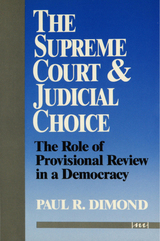 Supreme Court and Judicial Choice
Paul R. Dimond
University of Michigan Press, 1989 The conventional wisdom holds that the Supreme Court provides the final word as the Court tells the people what the Constitution commands. In interpreting uncertain constitutional text, however, the Court is not provided with a single answer but must, itself, make hard choices. Such choices by an unelected Court appear to conflict with the basic principle of majority rule by the people through their elected representatives in our democracy. Over time, through public debate, new arguments before the Court, legislation, new appointments to the Court, and constitutional amendments, however, the Court's prior judgements evolve, are distinguished or modified, and are even directly overturned. Viewed from this longer term perspective, the Court's supposedly final rulings can therefore be seen as an integral part of an ongoing national dialogue over the meaning of the Constitution. This understanding makes judicial review more consistent with our tradition of government by the people rather than by the Court. To explore this understanding, The Supreme Court and Judicial Choice develops a provisional approach to judicial review under which a surprisingly large number of judicial rulings would be subject to modification by ordinary legistlation enacted by Congress. Far from rendering the Court a powerless subject of Congress, this proposal would enhance the vital role of the Court in stimulating and shaping the ongoing dialogue with the people over the meaning of the Constitution.
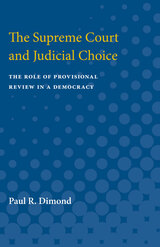 Supreme Court and Judicial Choice: The Role of Provisional Review in a Democracy
Paul R. Dimond
University of Michigan Press, 1989 The conventional wisdom holds that the Supreme Court provides the final word as the Court tells the people what the Constitution commands. In interpreting uncertain constitutional text, however, the Court is not provided with a single answer but must, itself, make hard choices. Such choices by an unelected Court appear to conflict with the basic principle of majority rule by the people through their elected representatives in our democracy. Over time, through public debate, new arguments before the Court, legislation, new appointments to the Court, and constitutional amendments, however, the Court's prior judgements evolve, are distinguished or modified, and are even directly overturned. Viewed from this longer term perspective, the Court's supposedly final rulings can therefore be seen as an integral part of an ongoing national dialogue over the meaning of the Constitution. This understanding makes judicial review more consistent with our tradition of government by the people rather than by the Court. To explore this understanding, The Supreme Court and Judicial Choice develops a provisional approach to judicial review under which a surprisingly large number of judicial rulings would be subject to modification by ordinary legistlation enacted by Congress. Far from rendering the Court a powerless subject of Congress, this proposal would enhance the vital role of the Court in stimulating and shaping the ongoing dialogue with the people over the meaning of the Constitution.
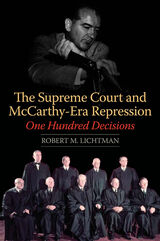 The Supreme Court and McCarthy-Era Repression: One Hundred Decisions
Robert M. Lichtman
University of Illinois Press, 2015 In this volume, attorney Robert M. Lichtman provides a comprehensive history of the U.S. Supreme Court's decisions in "Communist" cases during the McCarthy era. Lichtman shows the Court's vulnerability to public criticism and attacks by the elected branches during periods of political repression. The book describes every Communist-related decision of the era (none is omitted), placing them in the context of political events and revealing the range and intrusiveness of McCarthy-era repression. In Fred Vinson's term as chief justice (1946-53), the Court largely rubber-stamped government action against accused Communists and "subversives." After Earl Warren replaced Vinson as chief justice in 1953, however, the Court began to rule against the government in "Communist" cases, choosing the narrowest of grounds but nonetheless outraging public opinion and provoking fierce attacks from the press and Congress. Legislation to curb the Court flooded Congress and seemed certain to be enacted. The Court's situation was aggravated by its 1954 school-desegregation decision, Brown v. Board of Education, which led to an anti-Court alliance between southern Democrats and anti-Communists in both parties. Although Lyndon Johnson's remarkable talents as Senate majority leader saved the Court from highly punitive legislation, the attacks caused the Court to retreat, with Felix Frankfurter leading a five-justice majority that decided major constitutional issues for the government and effectively nullified earlier decisions. Only after August 1962, when Frankfurter retired and was replaced by Arthur Goldberg, did the Court again begin to vindicate individual rights in "Communist" cases--its McCarthy era was over. Demonstrating keen insight into the Supreme Court's inner workings and making extensive use of the justices' papers, Lichtman examines the dynamics of the Court's changes in direction and the relationships and rivalries among its justices, including such towering figures as Hugo Black, Felix Frankfurter, Earl Warren, William O. Douglas, and William J. Brennan, Jr. The Supreme Court and McCarthy-Era Repression: One Hundred Decisions tells the entire story of the Supreme Court during this unfortunate period of twentieth-century American history.
The Supreme Court and Patents and Monopolies
Edited by Philip B. Kurland
University of Chicago Press, 1975 The papers in this collection are drawn from the annual The Supreme Court Review, which, since its inception in 1960, has been regarded by such legal scholars as Robert F. Drinnan, S. J., as "An indispensable, universally quoted work of the highest scholarship regarding the world's most influential tribunal." Now some of the most important contributions to the Review have been brought together in paperback editions that focus on issues that are becoming increasingly relevant to the ordinary citizen's daily life.
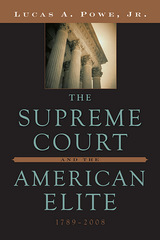 The Supreme Court and the American Elite, 1789-2008
Lucas A. Powe Jr.
Harvard University Press, 2009 “The Supreme Court follows the election returns,” the fictional Mr. Dooley observed a hundred years ago. And for all our ideals and dreams of a disinterested judiciary, above the political fray, it seems Mr. Dooley was right. In this engaging—and disturbing—book, a leading historian of the Court reveals the close fit between its decisions and the nation’s politics.
The story begins with the creation of the Constitution and ends with the June 2008 decisions on the rights of detainees at Guantánamo Bay. Rendering crisp (and often controversial) judgments on key decisions from Marbury v. Madison to the War on Terror, Lucas Powe shows how virtually every major Supreme Court ruling, however deftly framed in constitutional terms, suited the wishes of the most powerful politicians of the time. This history reflects a changing Court, from the country’s early struggles over commerce and transportation to the torturous justifications of slavery before the Civil War, to a post–New Deal interest in ending segregation, controlling criminal procedure, and addressing knotty questions arising from the Cold War. Through all of this the Court emerges as part of a ruling regime, doing its best to implement the regime’s policies.
Drawing on more than four decades of thinking about the Supreme Court and its role in the American political system, this book offers a new, clear, and troubling perspective on American jurisprudence, politics, and history.
The Supreme Court and the Judicial Function
Edited by Philip B. Kurland
University of Chicago Press, 1976 The papers in this collection are drawn from the annual The Supreme Court Review, which, since its inception in 1960, has been regarded by such legal scholars as Robert F. Drinnan, S. J., as "An indispensable, universally quoted work of the highest scholarship regarding the world's most influential tribunal." Now some of the most important contributions to the Review have been brought together in paperback editions that focus on issues that are becoming increasingly relevant to the ordinary citizen's daily life.
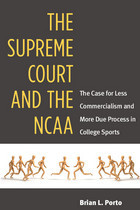 The Supreme Court and the NCAA: The Case for Less Commercialism and More Due Process in College Sports
Brian L. Porto
University of Michigan Press, 2013 Two Supreme Court decisions, NCAA v. Board of Regents (1984) and NCAA v. Tarkanian (1988), have shaped college sports by permitting the emergence of a supercharged commercial enterprise with high financial stakes for institutions and individuals, while failing to guarantee adequate procedural protections for persons charged with wrongdoing within that enterprise. Brian L. Porto examines the conditions that led to the cases, the reasoning behind the justices' rulings, and the consequences of those rulings. Arguing that commercialized college sports should be compatible with the goals of higher education and fair to all participants, Porto suggests that the remedy is a federal statute. His proposed College Sports Legal Reform Act would grant the NCAA a limited "educational exemption" from the antitrust laws, enabling it to enhance academic opportunities for athletes. The Act would also afford greater procedural protections to accused parties in NCAA disciplinary proceedings. Porto's prescription for reform in college sports makes a significant contribution to the debate about how best to address perennial problems in college sports such as cost containment, access to a meaningful education for athletes, and fairness in rule enforcement.
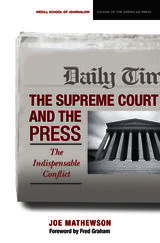 The Supreme Court and the Press: The Indispensable Conflict
Joe Mathewson
Northwestern University Press, 2011 Although theirs has been a contentious relationship, Joe Mathewson shows that, since the framing of the Constitution, the Supreme Court has needed the press to educate the public about its actions, just as the press has depended on the Supreme Court to ensure the freedoms that give it life. The Court ignored the First Amendment for more than a century and then trampled it, but since the 1960s it has tended to uphold the rights of the press in the face of opposition, that coming from the Executive Branch. Still, the Court has repeatedly failed to fully inform the public of its decisions. Even today the Court permits only limited access to its audio tapes of oral arguments, and it famously refuses to allow television cameras into the courtroom. Mathewson argues that if the Supreme Court wants to maintain its legitimacy and authority in the internet age it must allow broader access for the press.
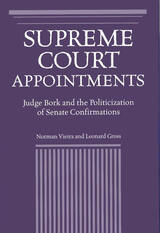 Supreme Court Appointments: Judge Bork and the Politicization of Senate Confirmations
Norman Vieira and Leonard Gross
Southern Illinois University Press, 1998 Norman Vieira and Leonard Gross provide an in-depth analysis of the political and legal framework surrounding the confirmation process for Supreme Court nominees. President Ronald Reagan’s nomination of Judge Robert Bork to the Supreme Court met with a fierce opposition that was apparent in his confirmation hearings, which were different in many ways from those of any previous nominee. Lasting longer than any other Supreme Court confirmation battle, the Senate hearings dragged on for eighty-seven hours over a twelve-day period. Bork personally testified for more than thirty hours, outlining his legal philosophy in greater detail than had ever before been required of a Supreme Court nominee. Nor had any previous Supreme Court nominee faced the number of witnesses who testified at the Bork hearings. Deriving their material from hundreds of in-depth interviews with those who participated in the confirmation hearings, Vieira and Gross present a firsthand account of the behind-the-scenes pressure on senators to oppose Bork. Special-interest groups, they note, attempted to control the confirmation process, with both the media and public-opinion polls playing major roles in the defeat of the nomination. Both liberal and conservative groups used the Bork debate to raise money for political war chests. This behind-the-scenes view of the politics and personalities involved in the Bork confirmation controversy provides a framework for future debates regarding the confirmation process. To help establish that framework, Vieira and Gross examine the similarities as well as the differences between the Bork confirmation battle and other confirmation proceedings for Supreme Court nominees. They also analyze the Supreme Court nominations made after the Bork hearings, including an extensive examination of the controversial Clarence Thomas nomination.
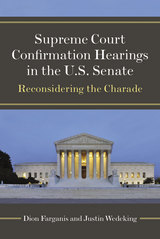 Supreme Court Confirmation Hearings in the U.S. Senate: Reconsidering the Charade
Dion Farganis and Justin Wedeking
University of Michigan Press, 2014 Critics claim that Supreme Court nominees have become more evasive in recent decades and that Senate confirmation hearings lack real substance. Conducting a line-by-line analysis of the confirmation hearing of every nominee since 1955—an original dataset of nearly 11,000 questions and answers from testimony before the Senate Judiciary Committee—Dion Farganis and Justin Wedeking discover that nominees are far more forthcoming than generally assumed. Applying an original scoring system to assess each nominee’s testimony based on the same criteria, they show that some of the earliest nominees were actually less willing to answer questions than their contemporary counterparts. Factors such as changes in the political culture of Congress and the 1981 introduction of televised coverage of the hearings have created the impression that nominee candor is in decline. Further, senators’ votes are driven more by party and ideology than by a nominee’s responsiveness to their questions. Moreover, changes in the confirmation process intersect with increasing levels of party polarization as well as constituents’ more informed awareness and opinions of recent Supreme Court nominees.
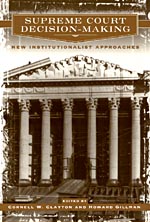 Supreme Court Decision-Making: New Institutionalist Approaches
Edited by Cornell W. Clayton and Howard Gillman
University of Chicago Press, 1998 What influences decisions of the U.S. Supreme Court? For decades social scientists focused on the ideology of individual justices. Supreme Court Decision Making moves beyond this focus by exploring how justices are influenced by the distinctive features of courts as institutions and their place in the political system.
Drawing on interpretive-historical institutionalism as well as rational choice theory, a group of leading scholars consider such factors as the influence of jurisprudence, the unique characteristics of supreme courts, the dynamics of coalition building, and the effects of social movements. The volume's distinguished contributors and broad range make it essential reading for those interested either in the Supreme Court or the nature of institutional politics.
Original essays contributed by Lawrence Baum, Paul Brace, Elizabeth Bussiere, Cornell Clayton, Sue Davis, Charles Epp, Lee Epstein, Howard Gillman, Melinda Gann Hall, Ronald Kahn, Jack Knight, Forrest Maltzman, David O'Brien, Jeffrey Segal, Charles Sheldon, James Spriggs II, and Paul Wahlbeck.
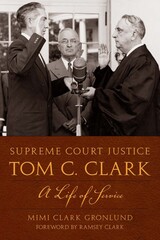 Supreme Court Justice Tom C. Clark: A Life of Service
By Mimi Clark Gronlund
University of Texas Press, 2010 An associate justice on the renowned Warren Court whose landmark ruling in Brown v. Board of Education overturned racial segregation in schools and other public facilities, Tom C. Clark was a crusader for justice throughout his long legal career. Among many tributes Clark received, Supreme Court Chief Justice Warren Burger opined that "no man in the past thirty years has contributed more to the improvement of justice than Tom Clark." Supreme Court Justice Tom C. Clark is the first biography of this important American jurist. Written by his daughter, Mimi Clark Gronlund, and based on interviews with many of Clark's judicial associates, friends, and family, as well as archival research, it offers a well-rounded portrait of a lawyer and judge who dealt with issues that remain in contention today—civil rights, the rights of the accused, school prayer, and censorship/pornography, among them. Gronlund explores the factors in her father's upbringing and education that helped form his judicial philosophy, then describes how that philosophy shaped his decisions on key issues and cases, including the internment of Japanese Americans during World War II, the investigation of war fraud, the Truman administration's loyalty program (an anti-communist effort), the Brown decision, Mapp v. Ohio (protections against unreasonable search and seizure), and Abington v. Schempp (which overturned a state law that required reading from the Bible each day in public schools).
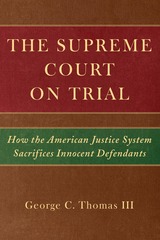 The Supreme Court on Trial: How the American Justice System Sacrifices Innocent Defendants
George C. Thomas III
University of Michigan Press, 2011 The chief mandate of the criminal justice system is not to prosecute the guilty but to safeguard the innocent from wrongful convictions; with this startling assertion, legal scholar George Thomas launches his critique of the U.S. system and its emphasis on procedure at the expense of true justice. Thomas traces the history of jury trials, an important component of the U.S. justice system, since the American Founding. In the mid-twentieth century, when it became evident that racism and other forms of discrimination were corrupting the system, the Warren Court established procedure as the most important element of criminal justice. As a result, police, prosecutors, and judges have become more concerned about following rules than about ensuring that the defendant is indeed guilty as charged. Recent cases of prisoners convicted of crimes they didn't commit demonstrate that such procedural justice cannot substitute for substantive justice. American justices, Thomas concludes, should take a lesson from the French, who have instituted, among other measures, the creation of an independent court to review claims of innocence based on new evidence. Similar reforms in the United States would better enable the criminal justice system to fulfill its moral and legal obligation to prevent wrongful convictions. "Thomas draws on his extensive knowledge of the field to elaborate his elegant and important thesis---that the American system of justice has lost sight of what ought to be its central purpose---protection of the innocent."
—Susan Bandes, Distinguished Research Professor of Law, DePaul University College of Law "Thomas explores how America's adversary system evolved into one obsessed with procedure for its own sake or in the cause of restraining government power, giving short shrift to getting only the right guy. His stunning, thought-provoking, and unexpected recommendations should be of interest to every citizen who cares about justice."
—Andrew E. Taslitz, Professor of Law, Howard University School of Law "An unflinching, insightful, and powerful critique of American criminal justice---and its deficiencies. George Thomas demonstrates once again why he is one of the nation's leading criminal procedure scholars. His knowledge of criminal law history and comparative criminal law is most impressive."
—Yale Kamisar, Distinguished Professor of Law, University of San Diego and Clarence Darrow Distinguished University Professor Emeritus of Law, University of Michigan
The Supreme Court Review, 1992
Edited by Dennis J. Hutchinson, David A. Strauss, and Geoffrey R. Stone
University of Chicago Press Journals, 1993 Since it first appeared in 1960, the Supreme Court Review has won acclaim for providing a sustained and authoritative survey of the implications of the Court's most significant decisions. Individual essays in the 1994 volume include articles by Craig M. Bradley on RICO and the first amendment; Bernard Schwartz on clear and present danger versus advocacy of unlawful action; William P. Marshall and Susan Gilles on the Supreme Court, the first amendment, and bad journalism; Paul Finkelman on Prigg v. Pennsylvania; Richard H. Fallon, Jr. on sexual harassment, content neutrality, and the first amendment; Lea Brilmayer on federalism, state authority, and the preemptive power of internal law; and C. Edwin Baker on Turner Broadcasting and content-based regulation of persons and presses.
The Supreme Court Review, 1993
Edited by Dennis J. Hutchinson, David A. Strauss, and Geoffrey R. Stone
University of Chicago Press Journals, 1994 Since it first appeared in 1960, the Supreme Court Review has won acclaim for providing a sustained and authoritative survey of the implications of the Court's most significant decisions. Individual essays in the 1994 volume include articles by Craig M. Bradley on RICO and the first amendment; Bernard Schwartz on clear and present danger versus advocacy of unlawful action; William P. Marshall and Susan Gilles on the Supreme Court, the first amendment, and bad journalism; Paul Finkelman on Prigg v. Pennsylvania; Richard H. Fallon, Jr. on sexual harassment, content neutrality, and the first amendment; Lea Brilmayer on federalism, state authority, and the preemptive power of internal law; and C. Edwin Baker on Turner Broadcasting and content-based regulation of persons and presses.
The Supreme Court Review, 1994
Edited by Dennis J. Hutchinson, David A. Strauss, and Geoffrey R. Stone
University of Chicago Press Journals, 1995 Since it first appeared in 1960, the Supreme Court Review has won acclaim for providing a sustained and authoritative survey of the implications of the Court's most significant decisions. Individual essays in the 1994 volume include articles by Craig M. Bradley on RICO and the first amendment; Bernard Schwartz on clear and present danger versus advocacy of unlawful action; William P. Marshall and Susan Gilles on the Supreme Court, the first amendment, and bad journalism; Paul Finkelman on Prigg v. Pennsylvania; Richard H. Fallon, Jr. on sexual harassment, content neutrality, and the first amendment; Lea Brilmayer on federalism, state authority, and the preemptive power of internal law; and C. Edwin Baker on Turner Broadcasting and content-based regulation of persons and presses.
The Supreme Court Review, 1999
Edited by Dennis J. Hutchinson, David A. Strauss, and Geoffrey R. Stone
University of Chicago Press Journals, 2000 "Some of the best researched and most thoughtful criticisms of recent decisions by the U.S. Supreme Court."—Ethics
Since it first appeared in 1960, The Supreme Court Review has won acclaim for providing a sustained and authoritative survey of the implications of the Court's most significant decisions. Consisting of diverse essays by distinguished lawyers, historians, and social scientists, each volume presents informed analyses of past and present opinions and discusses important public law issues that have come under Court consideration.
The Supreme Court Review, 2000
Edited by Dennis J. Hutchinson, David A. Strauss, and Geoffrey R. Stone
University of Chicago Press Journals, 2001 "Some of the best researched and most thoughtful criticism of recent decisions by the U.S. Supreme Court."—Ethics
The Supreme Court Review keeps you at the forefront of the Court's most significant decisions by surveying its origins, reforms, and interpretations of American law and compelling you to consider the impacts of legal institutions and judicial opinion. Diverse essays of informed analyses of past and present opinions document the complexities of the Court and relevant public law issues. Legal scholars, lawyers, judges, historians, political scientists, economists, and journalists have won acclaim for their contributions to each volume.
The Supreme Court Review, 2001
Edited by Dennis J. Hutchinson, David A. Strauss, and Geoffrey R. Stone
University of Chicago Press Journals, 2002 Since it first appeared in 1960, The Supreme Court Review has won acclaim for providing a sustained and authoritative survey of the implications of the Court's most significant decisions. Consisting of diverse essays by distinguished lawyers, historians, and social scientists, each volume presents informed analyses of past and present opinions and discusses important public law issues that have come under Court consideration.
The Supreme Court Review, 2002
Edited by Dennis J. Hutchinson, David A. Strauss, and Geoffrey R. Stone
University of Chicago Press Journals, 2003 Since its inception in 1960, The Supreme Court Review has been lauded for providing authoritative discussion of the Court's most significant decisions. Recent volumes have considered issues such as the 2000 elections in Florida, Federalism and state sovereignty, the Boerne v. Flores case, and numerous Fourth Amendment issues. Distinguished participants analyze current and previous public issues, sentiments, and the implications of Court decisions.
The Supreme Court Review, 2003
Edited by Dennis J. Hutchinson, David A. Strauss, and Geoffrey R. Stone
University of Chicago Press Journals, 2004 The Supreme Court Review receives accolades for providing authoritative discussion of the Court's most significant decisions and their resonating impacts. Recent scholarship addresses school vouchers via Zelman v. Simmons-Harris, Federalism and state sovereignty, the current state of political parties, and judicial passivity. Distinguished participants across the field of Law analyze current and previous public issues, sentiments, and implications addressed under Court consideration.
|
|
